Intro
Bike pants are popular options for cooler months, inclimate weather, or riding aggressively in the bike park, but they aren’t just for these scenarios. We have been testing several men’s and women’s bike pants throughout the last few months, and have found options that work well for a huge range of conditions and types of rides. Bike pants can offer more protection against the elements and trailside vegetation, reduce sun exposure, provide warmth, and prevent your legs from being caked in dirt or dust. So, check out the variety of pants that we’ve been spending time in – there’s a good chance that one of them might be just what you’re looking for.
7mesh Thunder Pant
Fabric: 70d GoreTex and 30d GoreTex Pro
Size Tested: Men’s Medium
Measured Weight: 315 g
MSRP: $300
David Golay: Squamish, BC-based 7mesh knows a thing or two about riding in wet weather, and the Thunder Pant is their waterproof option meant for the wettest, nastiest days on the bike. And with an especially long, wet spring here in the Pacific Northwest, I’ve had ample opportunity to test them. Overall, the Thunder Pant is easily the best waterproof bike pant that I’ve tried to date, but they’re not quite perfect, either.
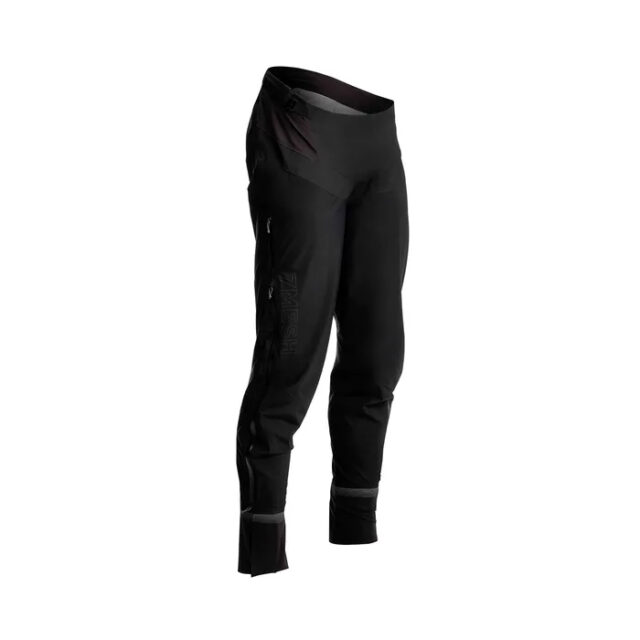
The most standout feature of the Thunder Pant is the ankle closure system — the bottom section of each leg is made from neoprene and features a series of velcro patches to close it around the ankle. That neoprene cuff is designed to be cut to length to set your desired inseam length — an especially critical element on waterproof pants in order to get the interface between the pants and whatever shoes you’re wearing just right so that water doesn’t run down your leg and into your shoes. There are printed lines on the inside of the cuff to guide your trimming, and it’s a truly easy process. Just go one small step at a time and dial things in incrementally — it’s easy to trim more off, but you can’t go backward and add length.
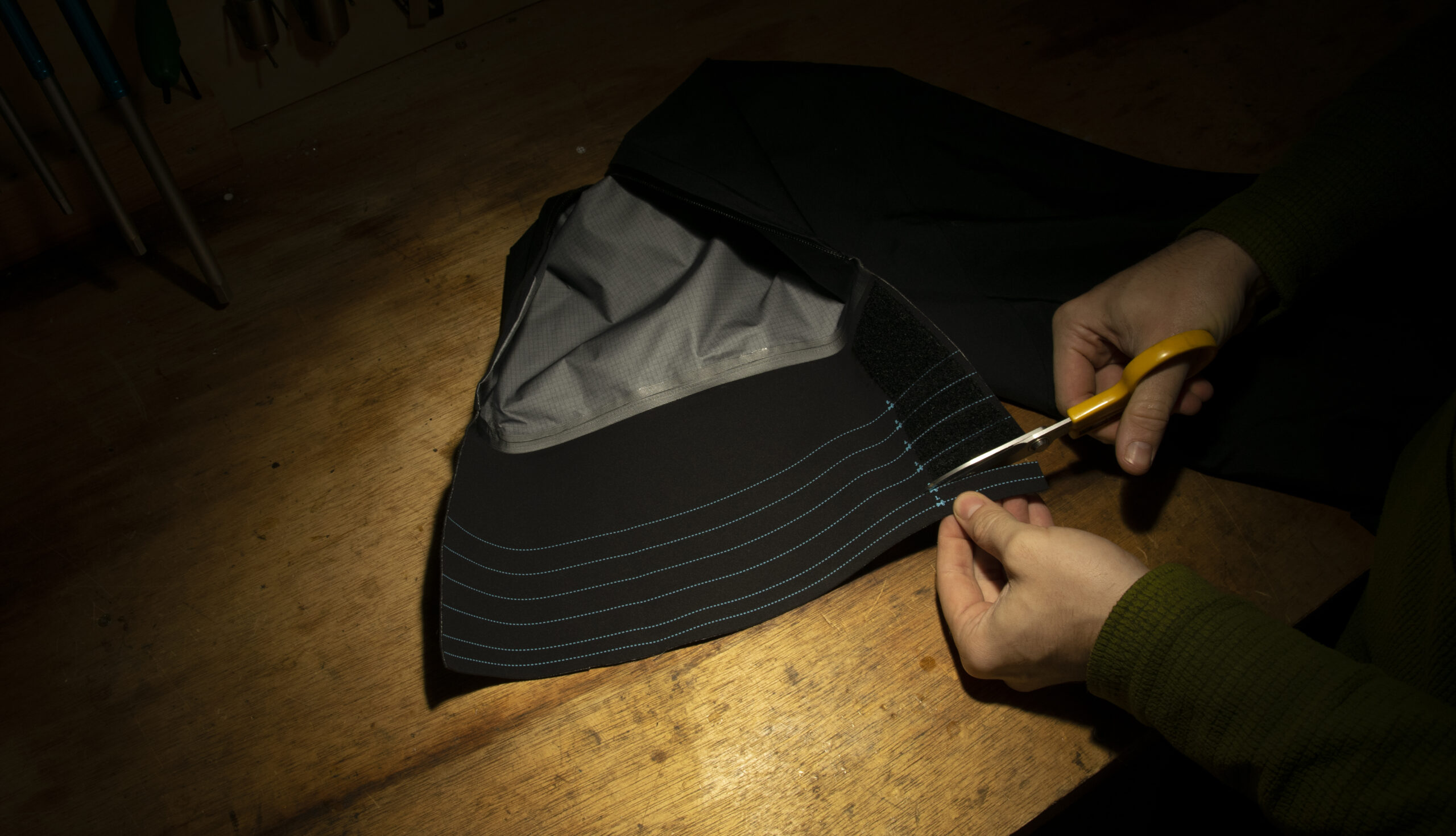
Each leg gets a two-way waterproof zipper down the outside, from the top of the neoprene cuff to mid-way up the thigh; these serve double duty to open up the lower part of the leg to take the pants on and off, and as a thigh vent (if you open them part-way from the top). It’s a nice arrangement that works well, and the thigh vents are quite effective in dumping heat out of the pants.
The waist closure is very bare-bones, using just a pair of cam lock closures on each hip for the waist adjustment, but no fly or other opening. The upshot is that you need to adjust the cams each time you take the pants on and off, which isn’t the end of the world but is a little more fiddly than it could be.
And the waist of the pants is extremely low rise in the front — there’s better coverage in the back, and the fit feels more natural once you’re hunched over on the bike, but it feels somewhat unnatural off the bike. There are small stretchy panels on each hip underneath the cam adjusters, but the majority of the pant is made of three-layer waterproof fabric, with 70 denier Gore-Tex in high wear areas and 30 denier GoreTex Pro in the lower legs and around the waist. And finally, there’s a single phone pocket with a waterproof zipper on the right thigh. 7mesh also makes a women’s version of the Thunder Pant with the same materials and features as the men’s version, reviewed here, just patterned a bit differently.
On the bike, the Thunder Pant works great — they’re fairly trim fitting but are patterned extremely well and manage to not have any tight spots or feel restrictive while riding (even with knee pads underneath them), breathe reasonably well for a true waterproof option, and have kept me warm and dry on some very miserable days on the bike over the last few months. I just wish they had a slightly easier-to-use waist closure and were cut a little higher across the front. There’s definitely a balance to be struck there between offering full coverage and not bunching up too much once you’re hunched over on the bike, particularly with a stiffer, less supple waterproof fabric, but the fit would work better on me if they rode a little higher.
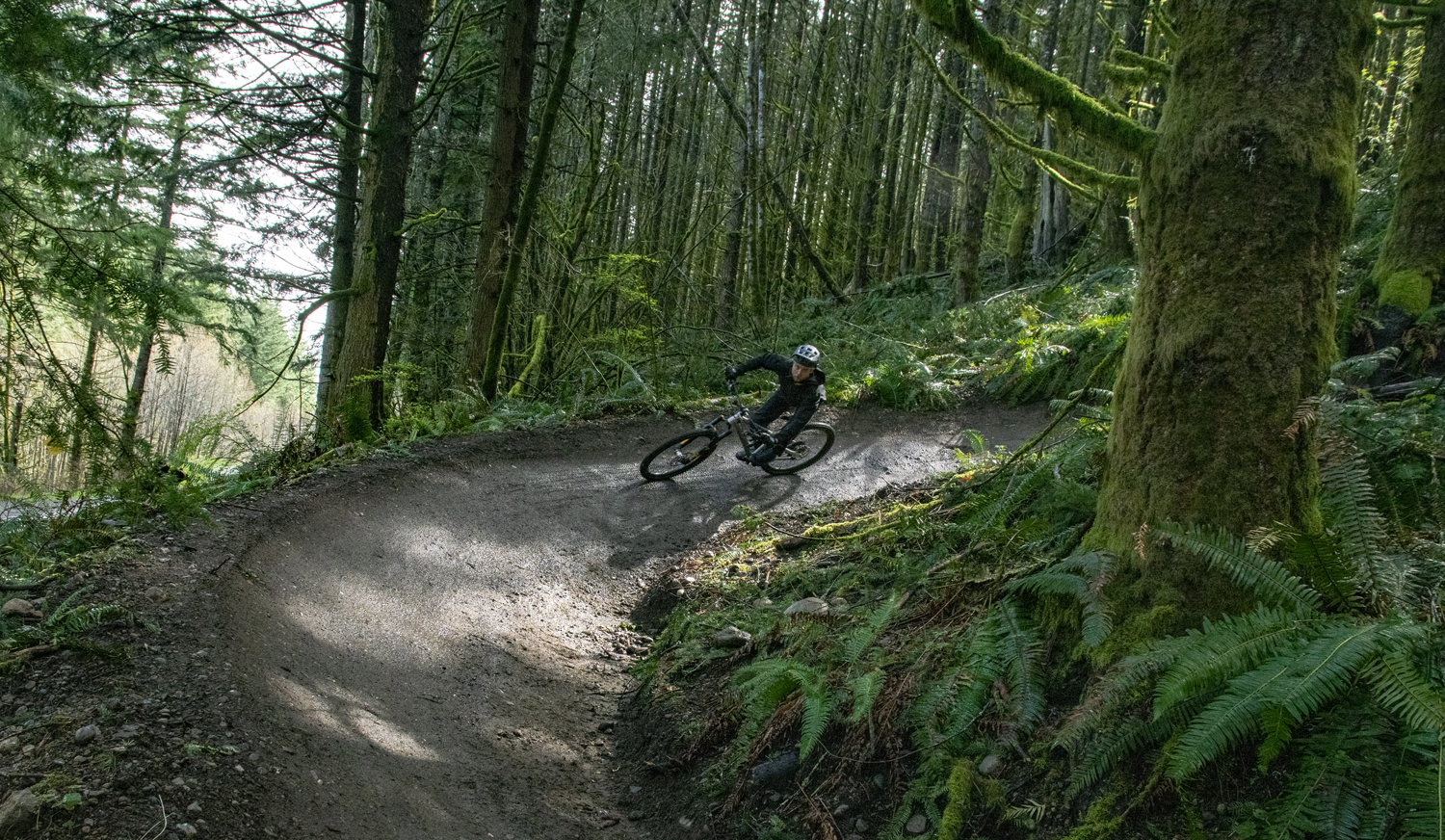
A second pocket would also be welcome — the one phone pocket works well, but a mirrored one on the other side for keys or other small items would be a nice addition. Overall though, the Thunder Pant does its main job — keeping you dry and regulating temperature — super well. And 7mesh has done a better job of patterning the crotch gusset area of waterproof pants and shorts than anything else I’ve tried to date — both the Thunder Pants and their Revo shorts do an outstanding job of sitting flat and avoiding bunching, while also moving the seams away from high-contact areas where they’d be prone to chaffing.
Waterproof pants aren’t going to be something that every rider needs, but the Thunder Pants are an especially nice option for folks who spend a lot of time in wetter climates. I’d love to see some more refinement of the waist fit and closure, and maybe another pocket, but those are fairly minor complaints, and everything else about the Thunder Pants is top-notch.
7mesh Glidepath
Main fabric: 85% nylon, 15% elastane with DWR
Size Tested: Men’s Medium
Measured Weight: 256 g
MSRP: $170
Reviewer: 6’, 170 lb / 183 cm, 77.1 kg
David: At the complete opposite end of the spectrum from the Thunder Pant is 7mesh’s Glidepath pant, which is the lightest, most breathable mountain bike pant I’ve tried to date. 7mesh calls the Glidepath a trim fit, but they’re not that trim — especially since the fabric has a bit of stretch to it — and they’re exceptionally comfortable both on and off the bike, particularly in warmer, drier weather.
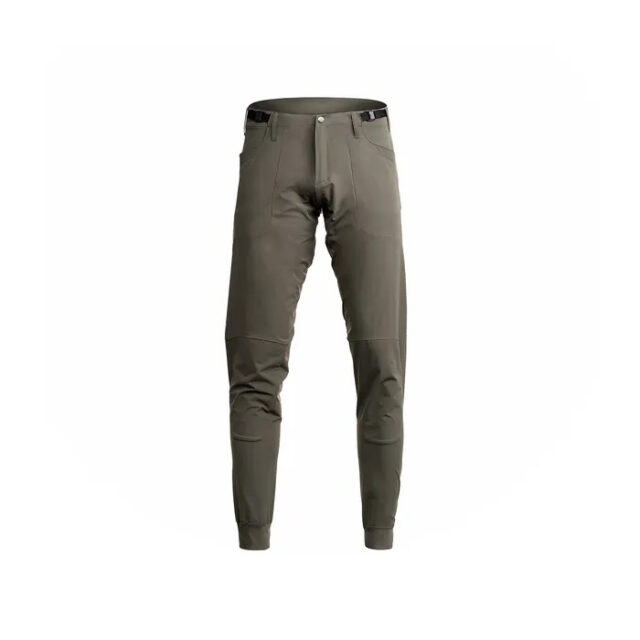
The Glidepath is a good bit more fully-featured than the Thunder Pant, with the same cam-lock adjusters on the hips for waist adjustment, but the Glidepath features a standard zippered fly with a top snap and two open hand pockets, plus a pair of zippered phone pockets just outside of them on the outer thigh. Personally, the Glidepath is just a touch too loose fitting and stretchy through the thighs for the phone pockets to work great for me, with my phone sagging and bouncing around more than I’d like, but if you’re not into the very slim fit of a lot of modern mountain bike pants the Glidepath is worth a look.
The lower leg tapers significantly to stop it from bunching up and getting tangled in things but still isn’t especially slim. 7mesh says the Glidepath has room for “light” knee pads, and while they’re not ideal for very bulky pads, I’ve worn some fairly large ones under the Glidepath successfully. Bulkier options do get a little tight, but there’s enough stretch to the material and articulation in the patterning to make it work. And like the Thunder Pant, 7mesh makes a women’s version of the Glidepath, too.
The Glidepath pant feels like it soaks up a surprising amount of water given how lightweight its fabric is, making it not the best option for wet weather riding, but it’s extremely comfortable and breathes very, very well when things are warmer and drier. And despite feeling notably thin and light, the Glidepath is holding up very well so far. I’ve definitely crashed onto my knees in them a couple of times without incident. If you’re after a very cool, breathable pair of pants with a sensible but not super slim fit, the Glidepath is a great option.
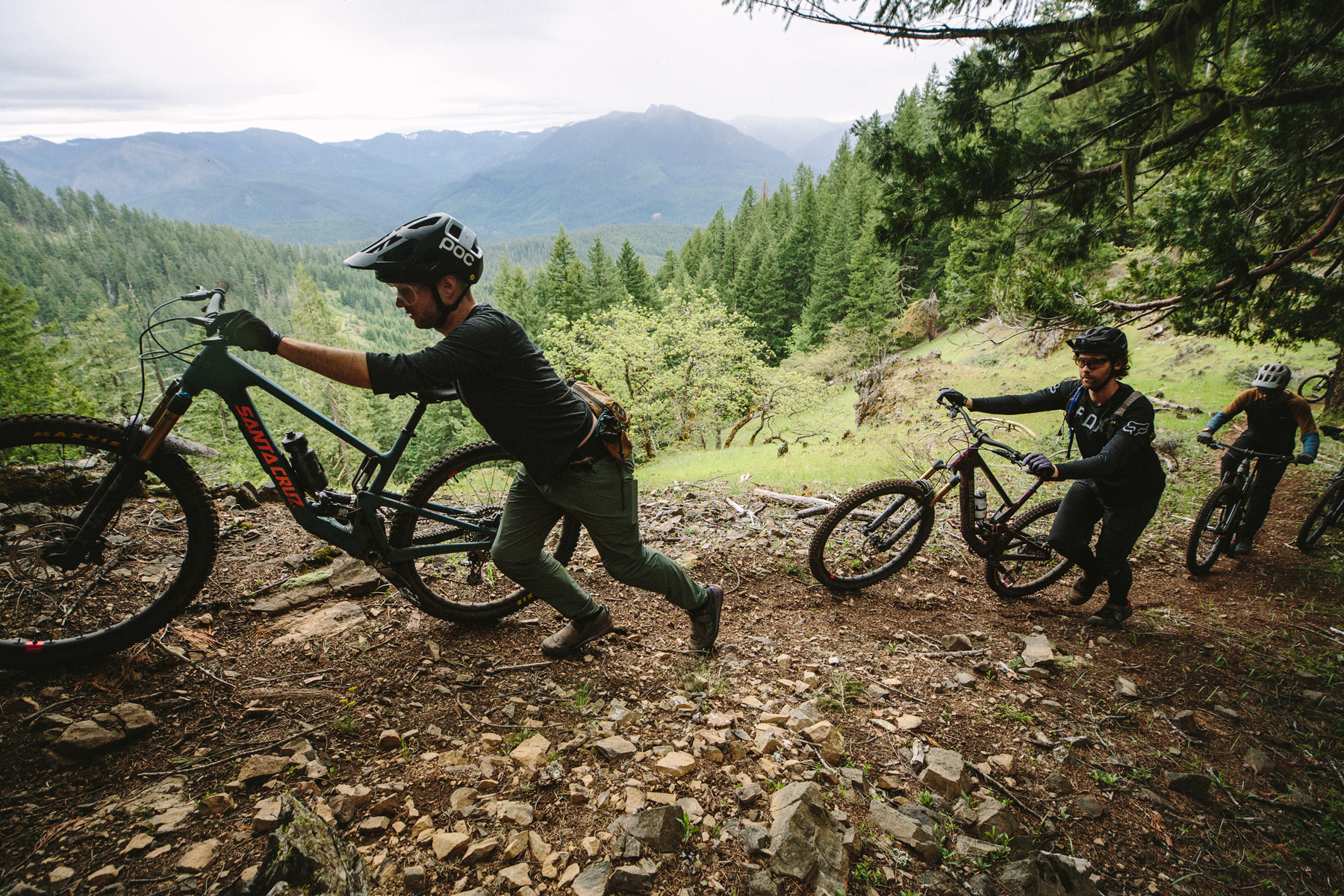
Flylow Tia Pant
Fabric: 94.5% polyester, 5.5% spandex
Size Tested: Medium
Measured Weight: 246 g
MSRP: $120
Reviewer: 5’9”, 167 lbs / 175 cm, 75.7 kg
Kara Williard: The Flylow Tia Pant is a lightweight, versatile mountain bike pant, and can be used for a lot more, too. As temperatures have increased here in the Gunnison Valley, the Tia Pant has become one of my go-to options for when I want some protection while not being overly hot or bulky. Compared to the Shredly Cascade and Wild Rye Freyah Pant, the Tia Pant uses a notably lighter material, and I have found it to be the most breathable of the three. I also have it in a lighter color, rather than black, so this also helps make it more appealing for the warmer days. The design of the Tia Pant is pretty simple, with only one zippered thigh pocket and minimal features. This corresponds to the minimalistic and lightweight design of the pants, and is fine for me, since I refuse to bike with anything in my pockets.
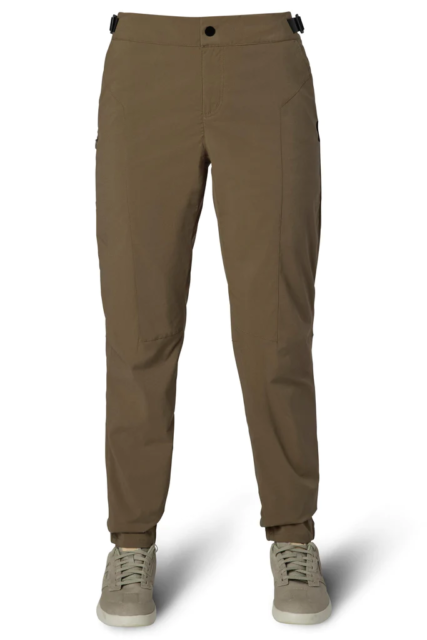
The Intuitive™ IQ MTB fabric that Flylow uses for the Tia isn’t all that flexible or stretchy, but it doesn’t restrict movement and tends to relax over time, particularly in the waistband. The Shredly Cascade and Wild Rye Freyah are both notably more stretchy, with a softer on-skin feel. However, the Tia Pant is a lot quicker drying and has a thinner overall fabric, which translates to much better breathability on warmer days. The fabric of the Tia Pant is a bit like a soft shell, but it is still very comfortable and smooth, even on longer days on the bike. The best feature of this fabric is how quick drying it is, which I got to test during some recent afternoon thunderstorms. Another benefit to this thinner, lightweight material is that the Tia Pant is really packable, making it a good option to for bikepacking or backpacking adventures.
Flylow Mediums historically fit me really well, and the Tia is no exception. It’s a comfortable fit, with room over the knees and no restriction while moving, while also being snug enough to not look or feel baggy. The waistband has an adjustable strap, which is nice for subtle alterations, depending on the weight of the chamois I am wearing beneath. The Tia Pant works well for my tall frame, but with the cinched ankle cuff, it is also easy to roll up at the bottom to shorten it by a couple of inches.
I find the Tia Pant to be a great design for sun protection and protection against rocks and branches, while not being bulky or heavy. The fabric is also (so far) proving durable and resistant to snags. As a bonus, I don’t think the Tia looks exclusively like a bike pant, and I have also found myself wearing it at camp and for hiking. For someone looking for a lighter, more breathable pant option for the summer months and shoulder seasons ahead, the Tia Pant is a good pick.
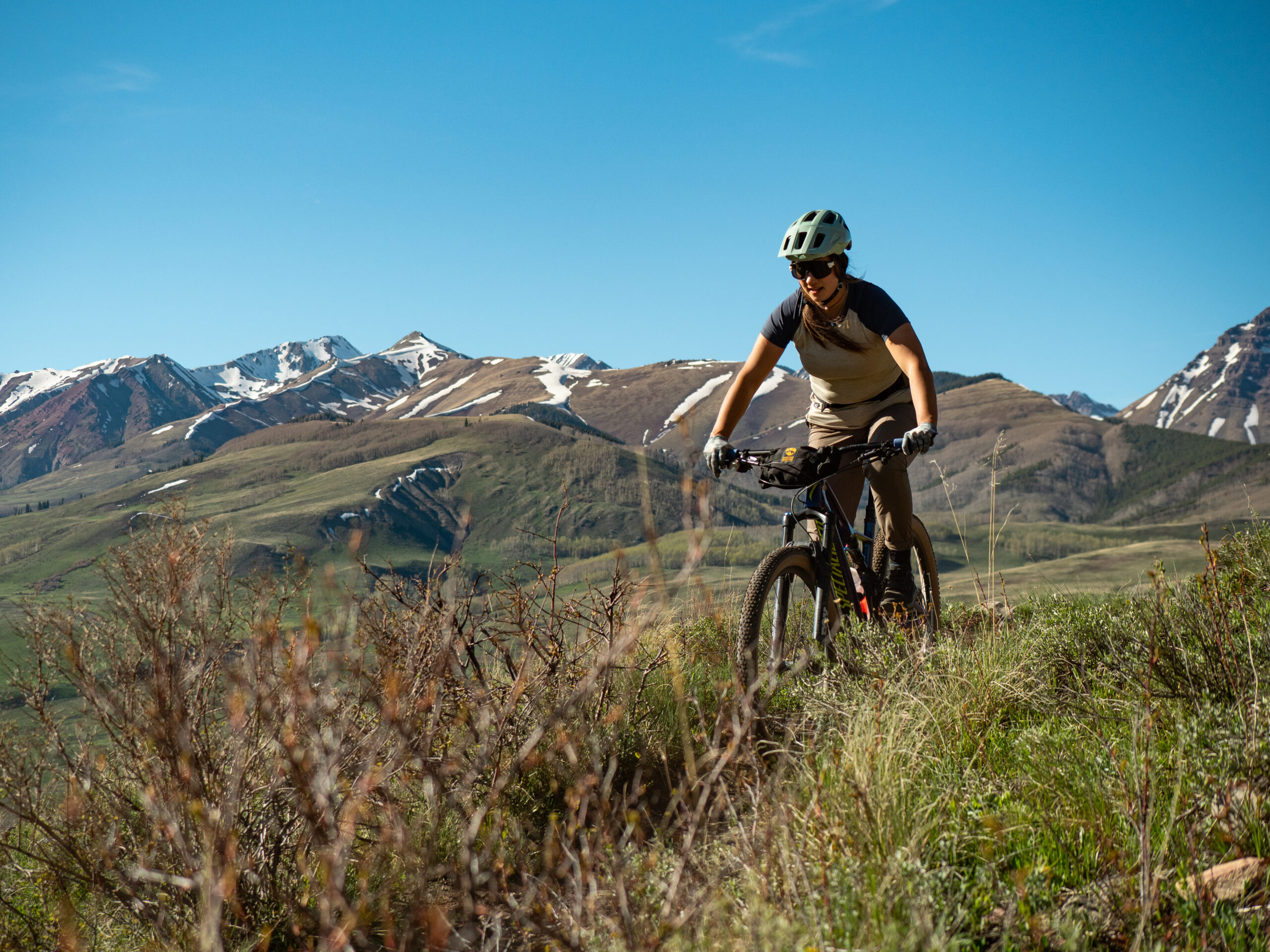
Specialized Trail Pant
Fabric: 90% nylon, 10% elastane
Size Tested: 32
MSRP: $135
Reviewer: 6’, 170 lb / 183 cm, 77.1 kg
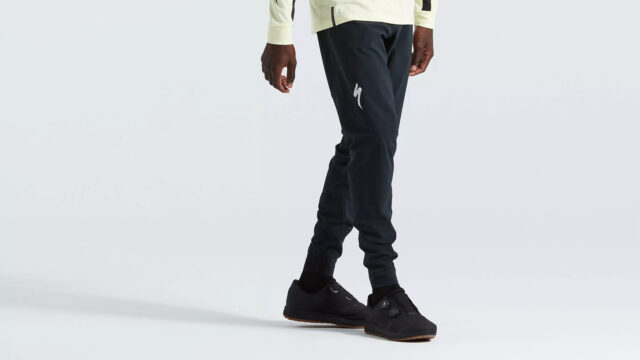
David: The Specialized Trail pant feels a lot like a more gravity-oriented pant that’s been made lighter and with a few extra features to make it more versatile for Trail bike duty. It’s quite slim fitting but has good room for knee pads to be worn underneath, and features a pair of zippered hand pockets, plus a zippered phone pocket on the left thigh. The waist closure uses a ratcheting buckle that spans the top of the zippered fly and lands on the front of the right hip. I initially wondered if that would feel bulky or interfere with hip pack straps, but it’s actually worked really nicely.
The material used for the Trail pant is fairly lightweight and reasonably breathable, but it’s a bit heavier and more tightly woven than that of the Glidepath in particular, and doesn’t feel as cool and airy as a result. The Trail pant is still very comfortable overall though, and does a better job than the Glidepath at not absorbing a lot of water if trail conditions are lightly damp — it’s become a go-to option for me for longer late spring rides where temperatures are getting into the 60s, but there are still some puddles to splash through.
My only real gripe with the Trail pants is that they’re hard to put on and even harder to take off. The ankle opening is very small, and while Specialized has put a strip of elastic material about halfway around the circumference of the ankle, it doesn’t extend far enough up the leg, and so there’s still a pinch point where the elastic stops. The main material has some stretch to it, but not enough to fit over my heel and instep easily (I wear a size 10 US shoe, so my feet are fairly average). They’re totally comfortable once they’re on, but taking them off, in particular, is a chore.
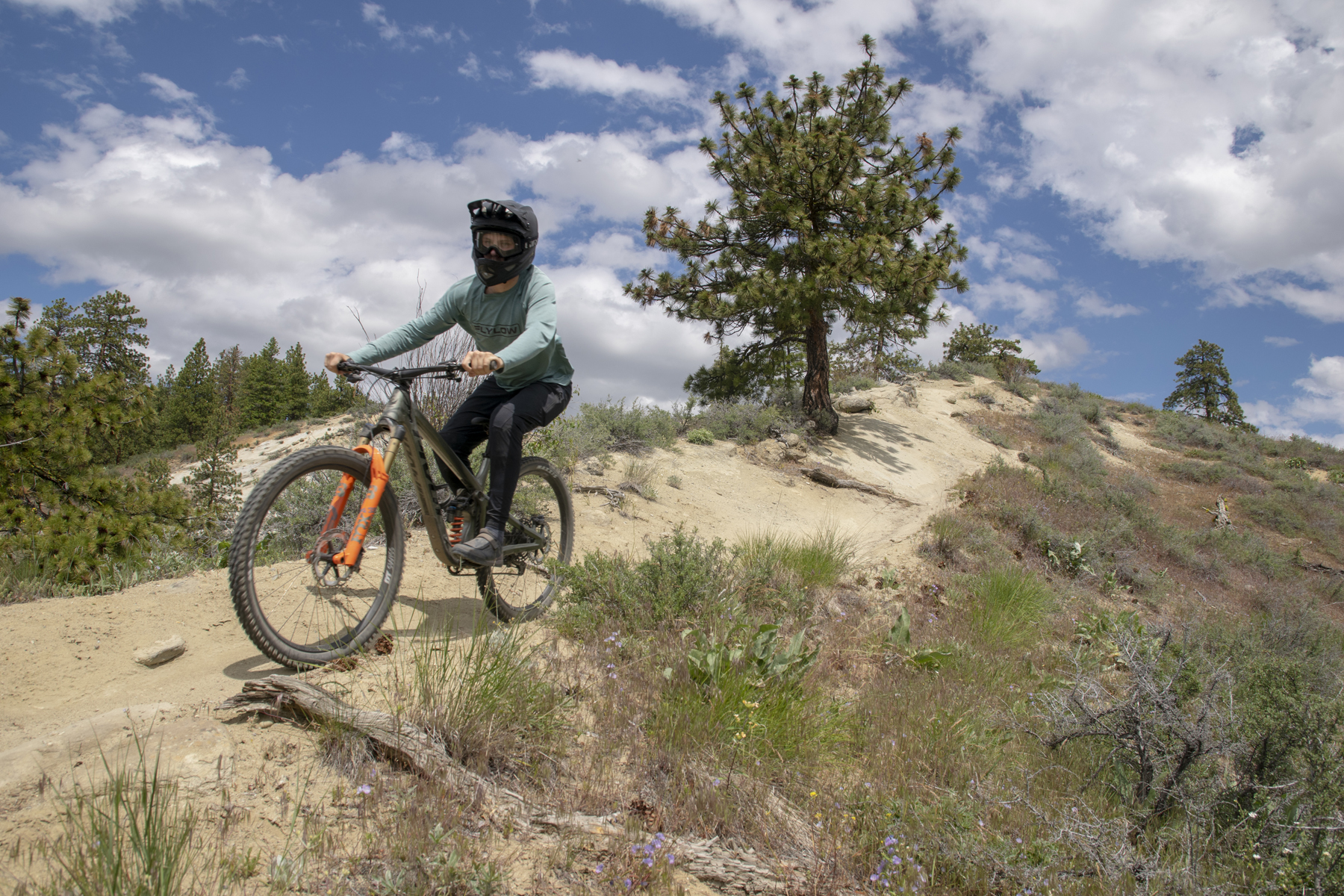
I did also tear a small hole in one knee in a crash — but I went down in a very dry, hardpacked section and slid a little, so it’s tough to say that it was really the pants’ fault. It was only about an inch long and a clean, straight tear so sewing it up was easy, and they’ve been holding up great since.
Apart from the difficulty in taking them off, I really like the Trail pants — they’re comfortable, the fit is good, if definitely on the slim side, and the pocket arrangement works very well. I’ve been finding myself reaching for them a ton of late when temperatures are high enough for the NF DP3 (which I still love for cooler weather) to feel a little warm. Particularly since they’re one of the more affordable options here, I think plenty of people (myself included) will be willing to live with the annoyance of the ankle opening, but it’d be nice to see that detail improved.
Giro Havoc Pant
Fabric: 94% Nylon / 6% Elastane Bluesign® Approved Fabric
Size Tested: 30
MSRP: $170
Reviewer: 5’10”, 155 lbs / 178 cm, 70 kg; 31 inch / 78.75 cm waist, 32 inch / 81.25 cm inseam
Dylan Wood: The Giro Havoc pant is on the lighter / more breathable end of the MTB pant spectrum, but it is also a very versatile option. Overall, this pant reminds me a lot of the Fox Flexair pant that I really came to enjoy last season; the Havoc is a breathable and comfortable pant that I mostly just forget about when I am wearing, which I would consider a good thing.
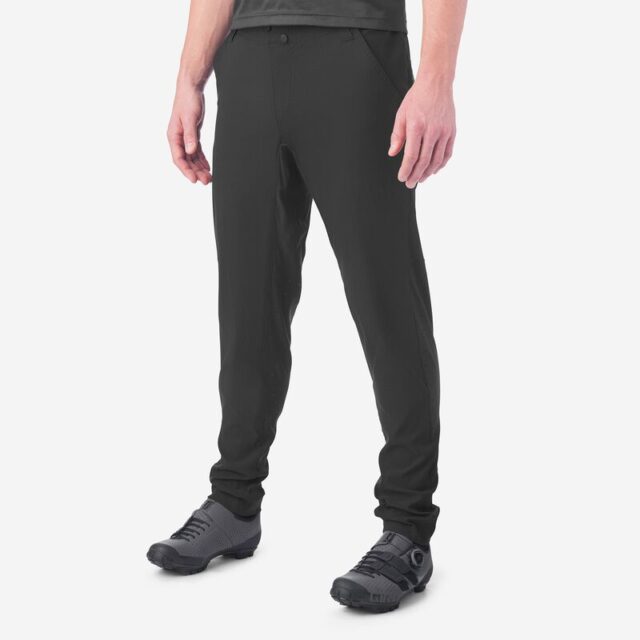
The Havoc has a pretty slim fit and tapers nicely at the ankles. I’ve had no issues wearing knee pads under them, and they are baggy enough around the knees and thighs to feel unrestrictive while pedaling. The Havoc utilizes a pretty traditional zipper fly closure, with two snaps reinforced by a small strip of hook-and-loop closure above the fly on the waistband. I’m wearing a size 30, which is very normal for me, and the Havoc fits really well in every aspect for me personally (see my stats above). This pant also has two large hand pockets that fit my phone, wallet, and keys nicely as well as a zipped pocket on the right thigh that is also generously roomy. Its waist size can be adjusted on the waistband using velcro tabs, and it does have belt loops if you like or need to ride with a belt.
The Havoc Pant features perforated fabric behind the calves and just below the back of the waistband, above the seat. Elsewhere on this garment, the DWR-treated Nylon fabric is soft and supple, but not very stretchy. While an option like the Fox Flexair is much more stretchy, the Havoc has a more tough and durable feel to it. While I’ve been lucky to not crash in the Havoc, these pants also don’t show any signs of wear, and I’d be more inclined to wear this at the bike park so long as I am not crashing a lot. However, I’d still opt for something like the Dakine Thrillium for regular bike park use. I’ve also found that the Havoc stays dry pretty nicely. While I’ll leave it up to David to test pants in straight-up downpours the Havoc has been fine on damp and muddy rides where most of the moisture is coming from the ground, rather than the sky. I’d still pick the POC Ardour All-Weather Pant for riding in the rain, but the Havoc feels like a great option if it isn’t so wet that you’d be willing to wear a less breathable pant. Speaking of breathability, I’ve ridden in the Havoc in temperatures up to 70º F (21º C) and sunny, and I’m quite happy with how cool they stay. I’m not someone who struggles with getting really hot while riding, but the Havoc has been really satisfactory nonetheless.
Overall, the Havoc strikes me as a really versatile option for riders looking for a pant that occupies a middle ground between all the extremes of design. While there are warmer, cooler, more durable, more pliable, more breathable, and more water-resistant pants out there, the Havoc does a really nice job of blending all of those traits into a package that a lot of riders could get along with.
Shredly Cascade Pant
Fabric: 91% Recycled polyester, 9% Spandex
Size Tested: 8
Measured Weight: 335 g
MSRP: $135
Reviewer: 5’9”, 167 lbs / 175 cm, 75.7 g
Kara: I received these pants just as temperatures in Gunnison began to really suggest that ski season was near, and biking was starting to feel a little brisk. My first impression of the Shredly Cascade Pant was basically “this is the most comfortable pair of pants, can I wear them every day?”
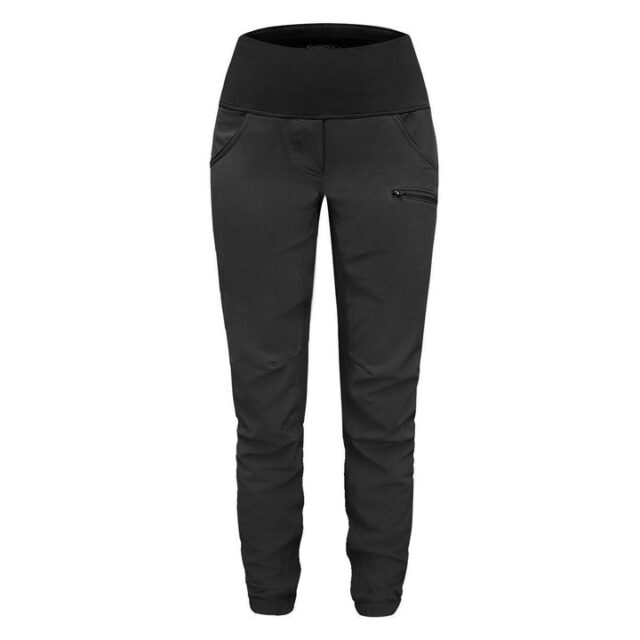
As someone who isn’t usually the biggest fan of pants for everyday wear, the Cascade Pant offers the perfect amount of stretch and flexibility. The most comfortable feature is the wide, yoga-style waistband. The 4-way stretchy fabric moves great on the bike, and has the right amount of stretch to feel flexible, but also to maintain its elasticity and a flattering fit over a series of days without washing. This is a quick-drying fabric, which makes the Cascade a viable option for wet and rainy rides, or even a bit of mild snowfall which I got to experience in late November. The pants feel great while moving for long periods of time, and I was pleased with the sustained comfort of the fit.
The Cascade Pant is a great weight for something that’s meant to be warm, durable, and protective. The fabric isn’t the smoothest or the softest, instead having more of a water-resistant and burly feel to it, especially when compared to the Wild Rye Freyah pant. That said, I’ve still found the Cascade Pant very comfortable overall.
The size 8 was a perfect fit, and I found the length to be just right. Even with a thicker chamois beneath, the pants were comfortable, stretchy, and always flattering. The waistband is extremely stretchy and smooth. The snuggest part of the pants was the cuff around the ankles, which I had to guide over my foot, but that wasn’t really a problem. I have historically worn an 8 in several different Shredly shorts, so the fit of the Cascade remains consistent within the brand.
The Cascade is built with zippered pockets at the hip and the side of the leg, which are useful for snacks and even my pretty bulky phone. There are also two fairly large hand pockets.
I don’t find myself carrying much in my pockets on the bike, but for someone that does, there is plenty of space to carry the smaller items. There is a drawstring at the waist to snug up, if needed, and this also prevents any gaping in the back when bending over.
From past experiences testing Shredly shorts and bike shirts, I am a fan of their fit, design, fun patterns, and overall inclusive approach to the biking world, as Shredly offers sizes 00-24, which is amazing.
Wild Rye Freyah Women’s Bike Pant
Fabric: Shell Fabric: WRDuraStretch 4-way stretch nylon, 88% Nylon, 12% Spandex, Secondary Fabric: 72% Recycled Polyester, 18% Polyester, 10% Spandex
Size Tested: 8
Measured Weight: 369 g
MSRP: $189
Reviewer: 5’9”, 167 lbs / 175 cm, 75.7 g
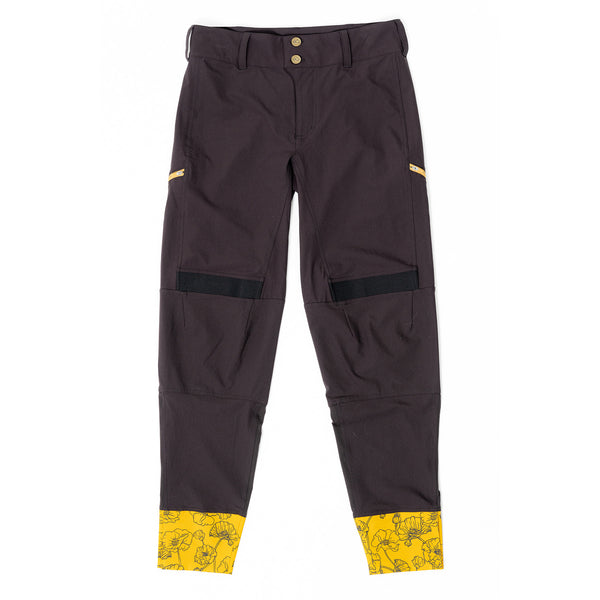
Kara: The Wild Rye Freyah Bike Pant is another pant that has helped change my mind about the function and necessity of bike pants, and maybe just pants in general. The Freyah was one of the first pants from a women-specific company that caught my eye. Upon my first ride in them, I was a fan. The Freyah is a stylish, technical pant, with a smoother and lighter material than the Shredly Cascade. For anyone that has worn the Wild Rye Freel or Freda short, the material is the same stretchy, smooth “WRDuraStretch” 4-way stretch nylon. I received these pants early enough in this past fall to put them to the test through hotter, dry, and dusty rides, and then take them on plenty of cold rides, including a snowy 100-mile bikepacking mission where temps were as low as 20-30° F. Given how well the Freyah handled both extremes, I think it’s an extremely versatile pant that could serve as an option for those looking for added sun / abrasion protection in hot, rocky desert terrain, as well as those wanting a slightly warmer option than shorts that lets them extend their bike season as temperatures drop (though the Shredly Cascade is better suited to purely cold / wet weather).
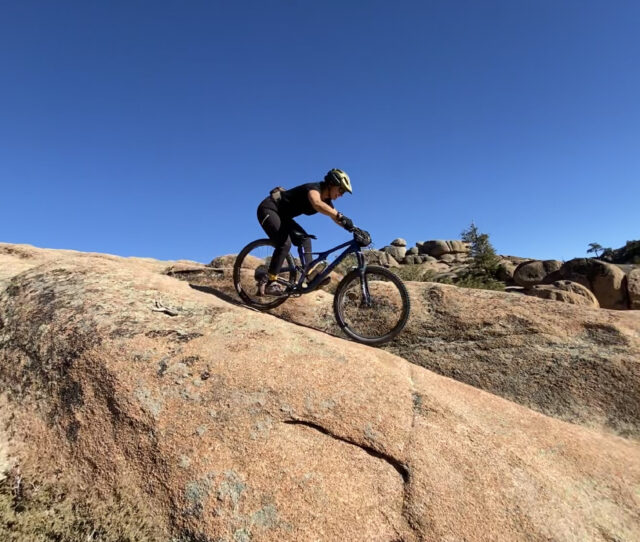
The fit of the Freyah is also consistent with the Freel and Freda shorts. In my previous review of the Freel Short, I spoke highly of both the fabric and fit of the Freel Short, which I tested in a size 8. The Freyah fits similarly, but I appreciate how Wild Rye built these pants to accommodate a variety of inseam heights. While all sizes offer an inseam of 31.5”, the cute patterned detail along the cuff with velcro closure makes it possible to roll up or down depending on your height, and depending on how snug you want the ankles. I found myself using this feature when I wanted to roll the pants up for a little more air flow.
The waistband on the Freyah isn’t quite as stretchy or comfortable as the yoga-style waistband in the Shredly Cascade, mostly because of the two snaps, in addition to two large buttons used for closure. But, over the course of a ride, these pants stretch out quite a bit, so I mostly noticed the slight discomfort at the waist when first putting them on.
The true test of comfort was two 50+ mile days during a cold bikepacking trip across southern New Mexico in late November, and I was so glad to have brought the Freyah as my only pair of bottoms. They were protective, warm, comfortable, and felt soft and flexible throughout many miles and climbs on the bike. Even as temps warmed and the strong New Mexico sun came out, the Freyah felt breathable. I also appreciated the added coverage of the pants as I crawled into my sleeping bag at the end of a long day, when my legs didn’t feel caked in dust like they would when wearing shorts.
The Freyah also fits in a very cute, flattering way, and the size 8 remained consistent with previous experiences in Wild Rye bottoms. While they can feel a little snug in the beginning of a ride, the material is super stretchy and starts to relax. Still they’ve never felt excessively loose, even when wearing them several days in a row. Throughout the hips, butt, and thighs, the fit felt contoured, flattering, and didn’t restrict movement whatsoever.
The Freyah is a thinner material than the Shredly Cascade, which might make them more versatile. I have found this material from Wild Rye to still be robust and durable, though, as my original Freel shorts have sustained lots of rides and a couple big crashes. The Freyah has reinforced knees, which reportedly fit knee pads under the pants, though I haven’t tested this. They also offer two side-zippered pockets that are ideal for smaller items, but not quite roomy enough for my large phone. The construction of the Freyah features several panels of materials, which I think helps create its flattering fit while still offering great mobility and articulation over key zones, especially the knees. The patterned detail of the cuff is also featured in the back of the waist, which is cute, but not overkill on pattern or colors, keeping a simple, clean look while still having a bit of Wild Rye’s classically beautiful, nature-based prints.
Fox Flexair Pant
Fabric: 88% polyamide nylon, 12% elastane
Size Tested: 30
Measured Weight: 286 grams
MSRP: $140
Reviewer: 5’10”, 155 lbs / 178 cm, 70 kg; 31 inch waist, 32 inch inseam
Dylan: The Fox Flexair Pant has become my go-to option for dry, cool weather riding.
First of all, they’re extremely comfortable – they’re one of the most comfortable pairs of pants I own, and I’m not only talking about mountain bike pants here. I could seriously wear these as pajama pants. The waistband is stretchy, always stays in place, and has a very simple design that is easy to use and adjust to your specific waist size. The fabric of the Flexair is also quite stretchy and allows for a very nonrestrictive fit, even with knee pads worn under the pants.
Overall, the fit is pretty slim. I found that the inseam is perfectly cut when standing with my legs straight, but with bent knees while pedaling, the cuffs sit an inch or two above my ankles.
The Flexair pant features small circular cutouts on the thighs and calves, and is pretty breathable for a pant. They definitely kept the wind off my legs in cooler temps such as 45º F (7º C), but I was also quite happy riding in them in temperatures up to around 60º F (16º C) and sunny, where I could also definitely be content with shorts on.
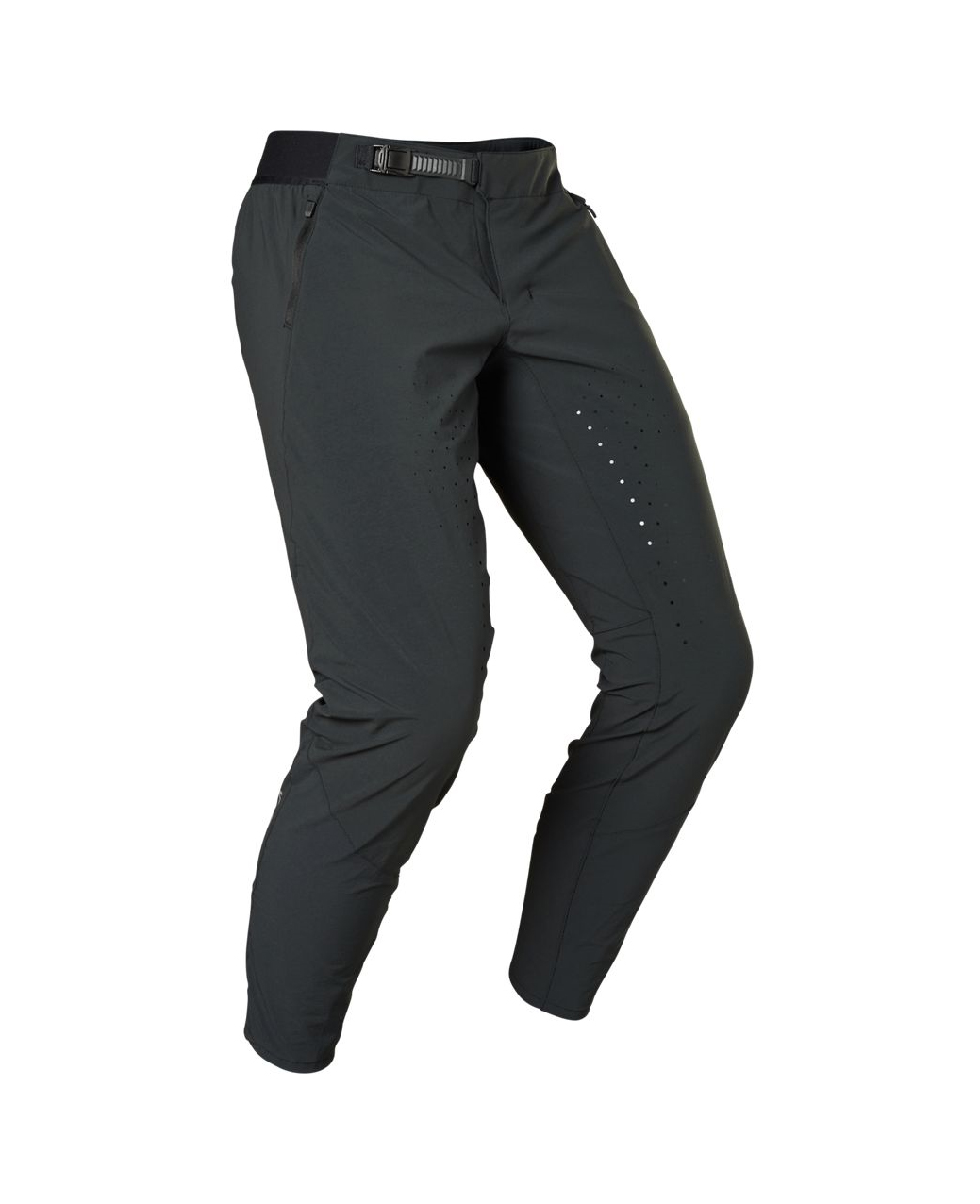
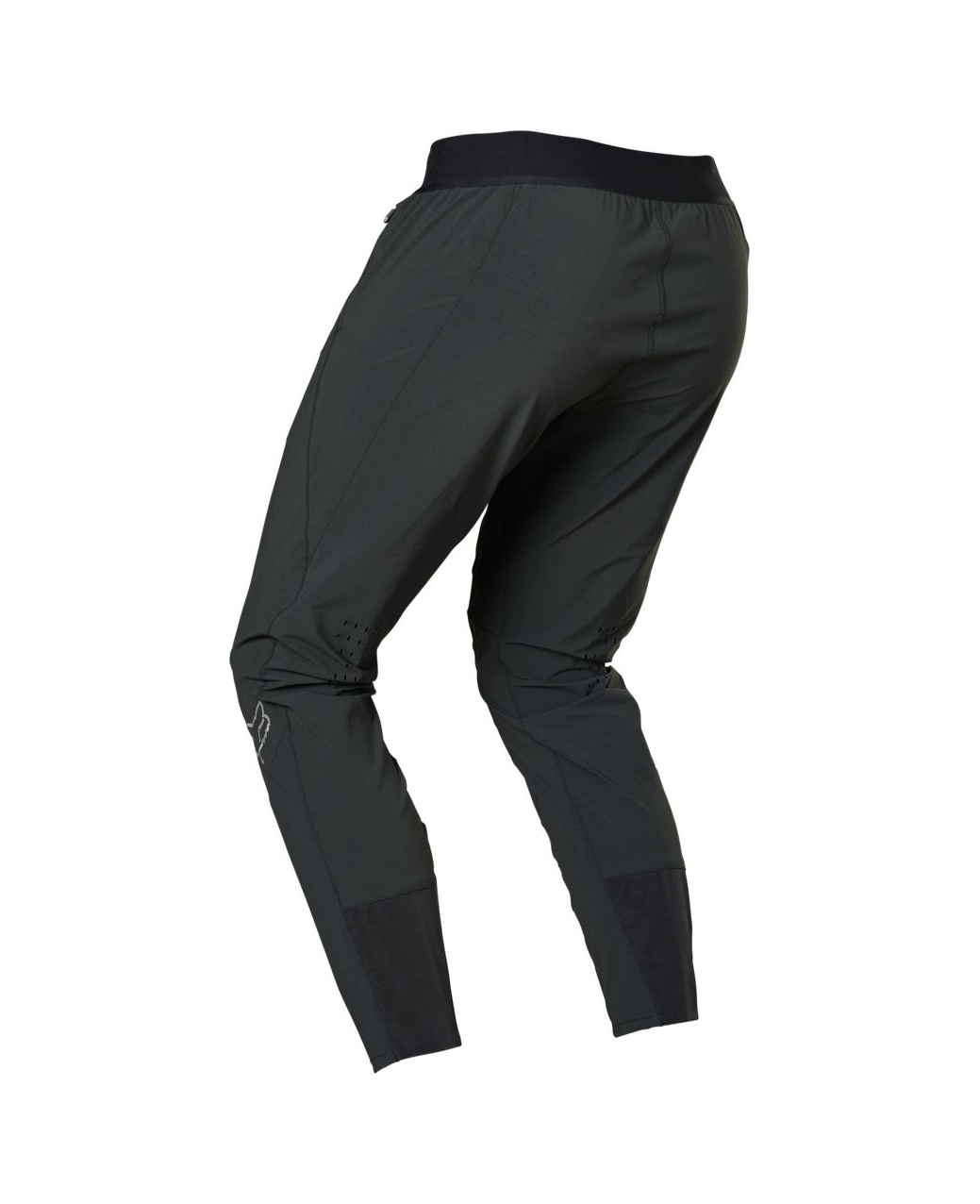
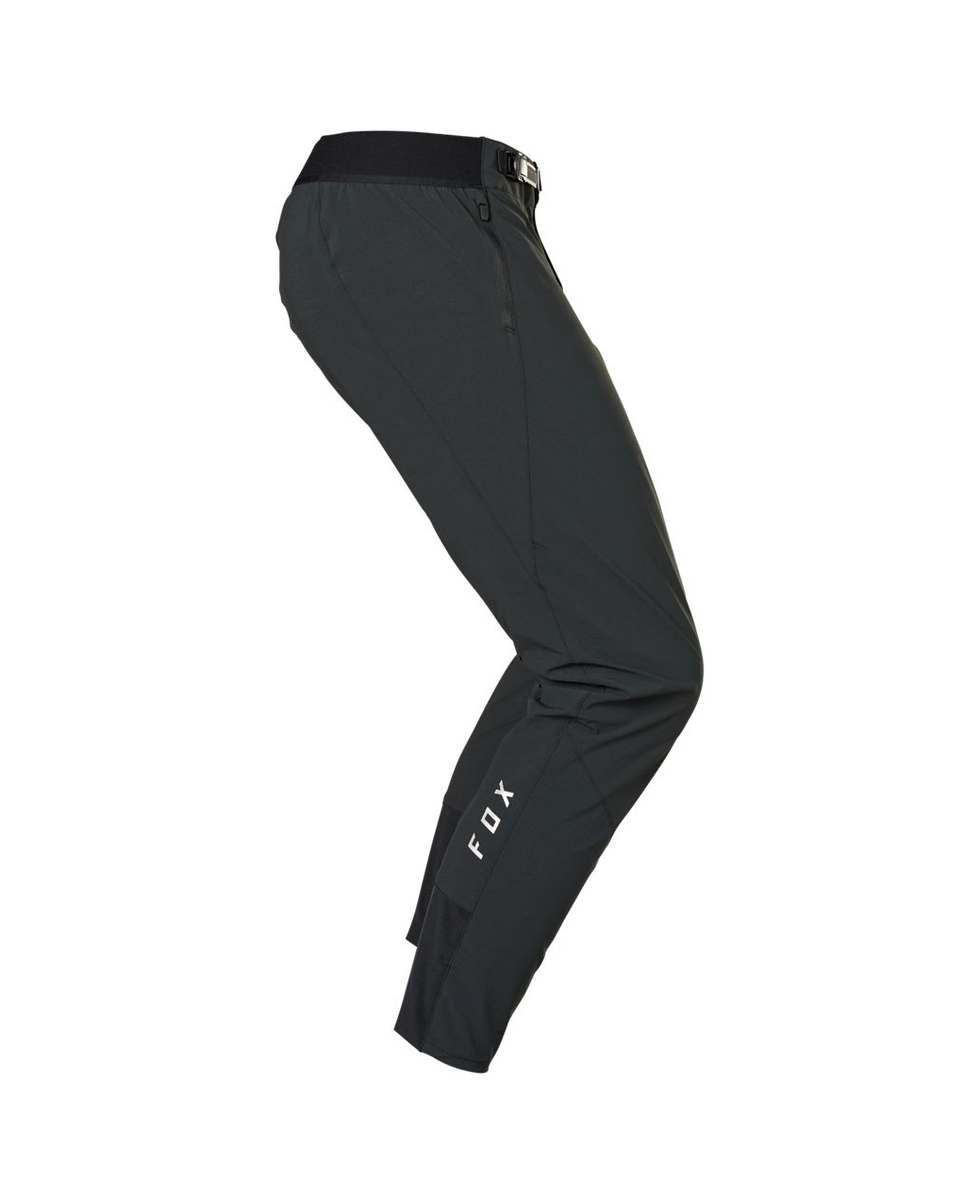
These pants do offer some warmth when riding in cooler temps, and they also offer some protection against riding through shrubs and tall grass. They definitely aren’t waterproof and would be far from my first pick for riding in wet conditions (I mean, they have tons of small holes throughout, what would you expect?). While I never had any durability issues with them, I was also fortunate enough to not have any bad crashes in them. I definitely took a spill in them a few times and rode plenty of trails where I was brushing up against lots of moderately woody foliage, and I don’t think a single thread came out of place, let alone rip. That being said, since these pants are so light and thin, I do not think they are a good choice for riding in the bike park or for people who just tend to crash a lot and rip their pants.
Last, this pant has one zippered thigh pocket on each side, and they are plenty roomy to carry a larger cell phone, a pair of gloves, or a Clif Bar, and they easily fit my wallet and keys for any post-ride activities.
Overall, I was very impressed by the Flexair, and they are now my go-to pants for trail rides in chilly and dry conditions. Anyone interested in a lightweight, thin, slim MTB pant and is okay sacrificing some durability and weatherproofness ought to check out the Fox Flexair pant.
Dakine Thrillium Bike Pant
Fabric: 96% Nylon, 4% Spandex
Size Tested: Medium
Measured Weight: 672.5 g
MSRP: $160
Dylan: The Dakine Thrillium pant to be a very good option if warmth, durability, and/or protection are high priorities. They’re much heavier, warmer, and burlier than the Fox Flexair (above), making them a great option for cooler days and/or more gravity-oriented riding.
The Thrillium pant has a pretty baggy and loose fit. It easily fits knee pads and whatever other layers you might need to wear underneath them, including other pieces of body armor.
The Thrillium is definitely a pant that is best suited to gravity riding. They are pretty heavy and thick, and high-wear areas are reinforced, resulting in a lot of protection for crashes (I did take a few small spills in them and you couldn’t tell by the way their current condition). Despite being heavy and thick, they don’t restrict movement and they didn’t feel heavy on me (for comparison, the Thrillium’s weight is pretty comparable to a pair of winter snow pants).
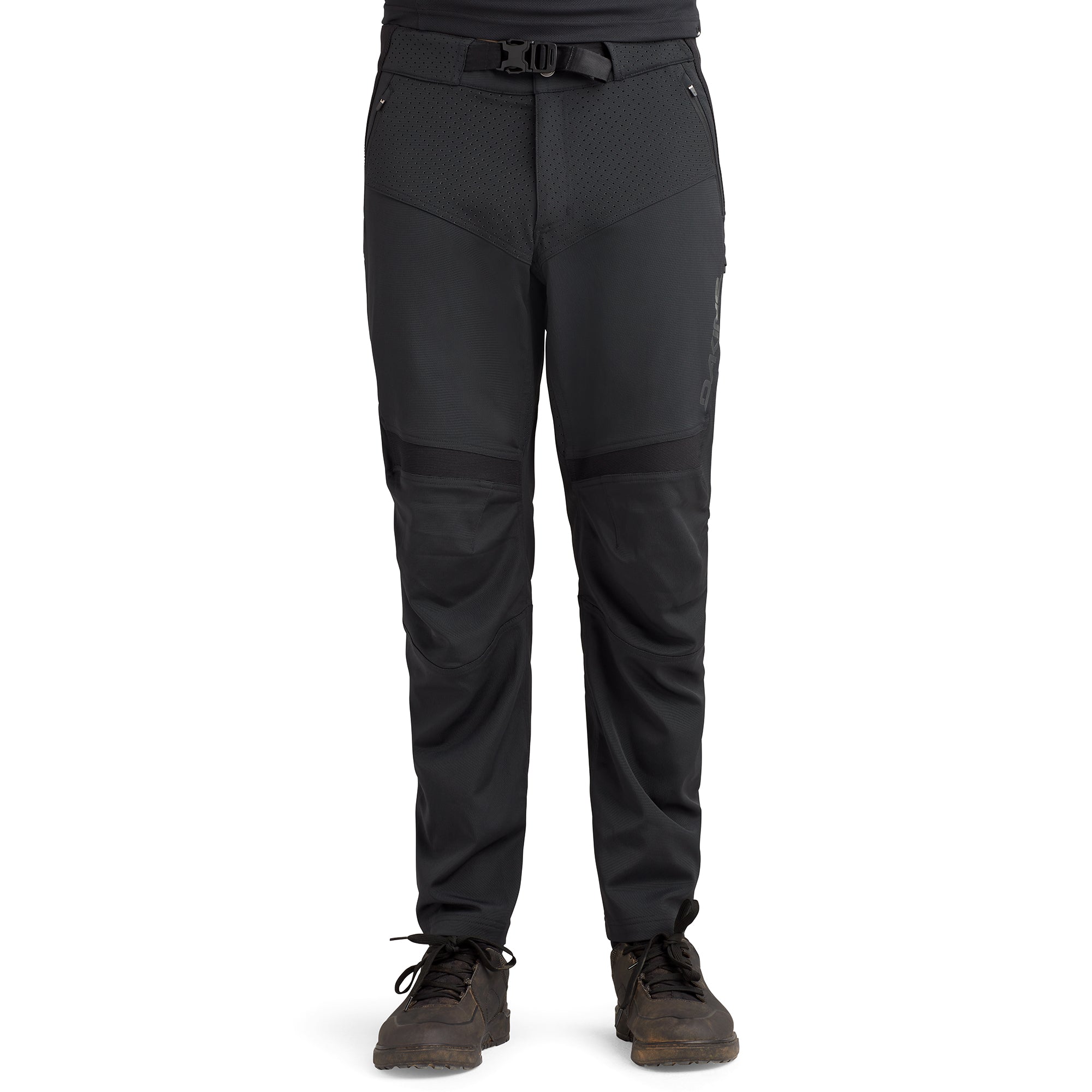
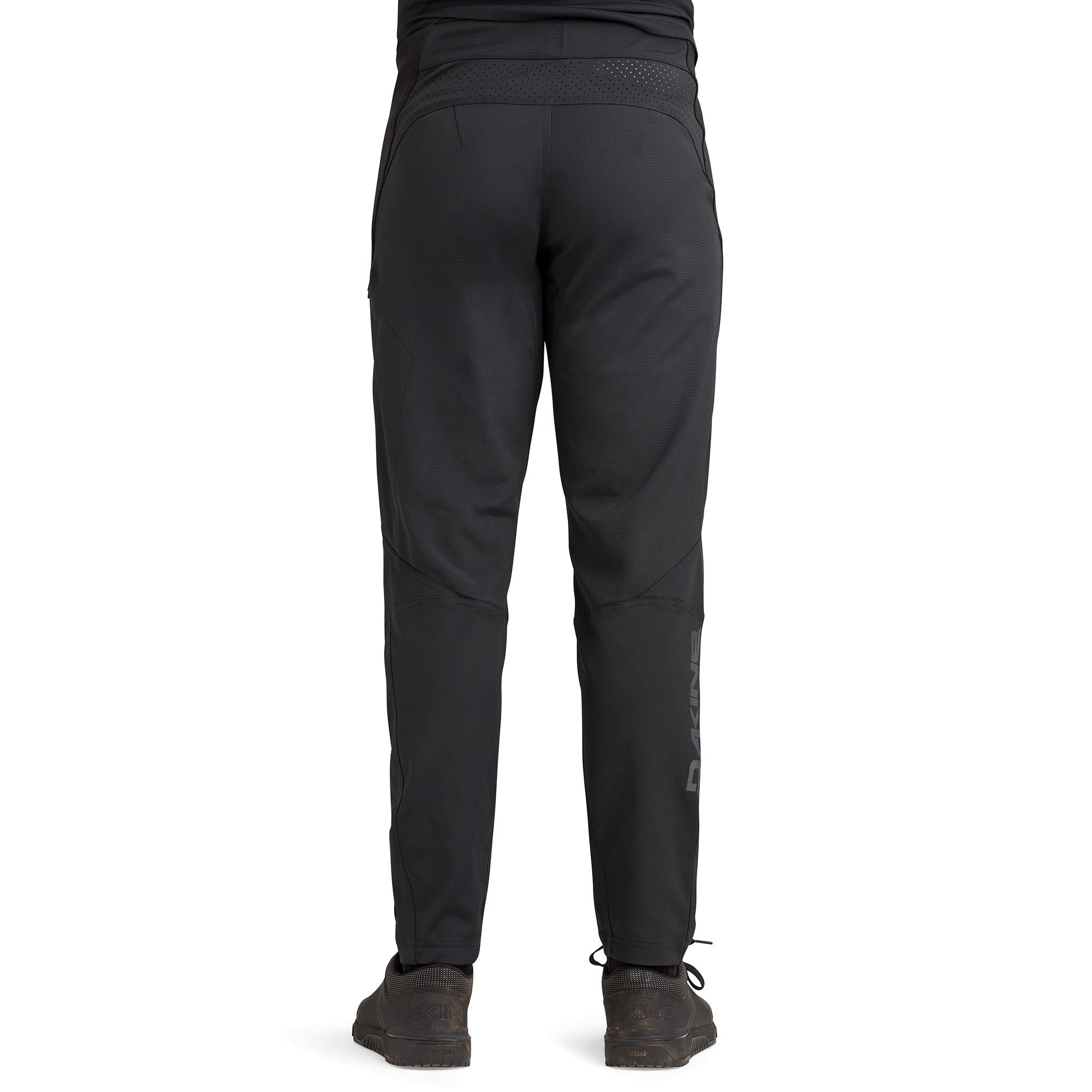
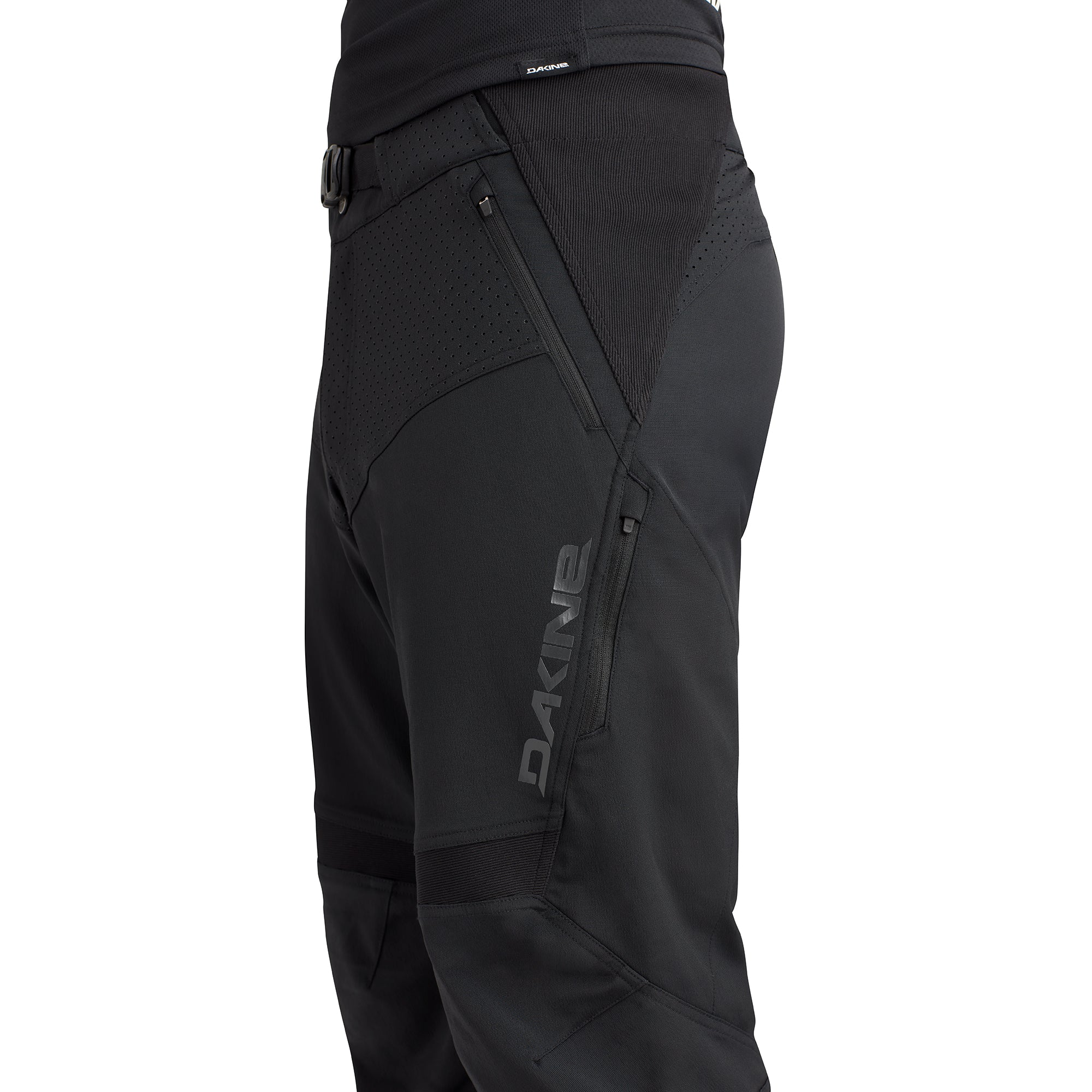
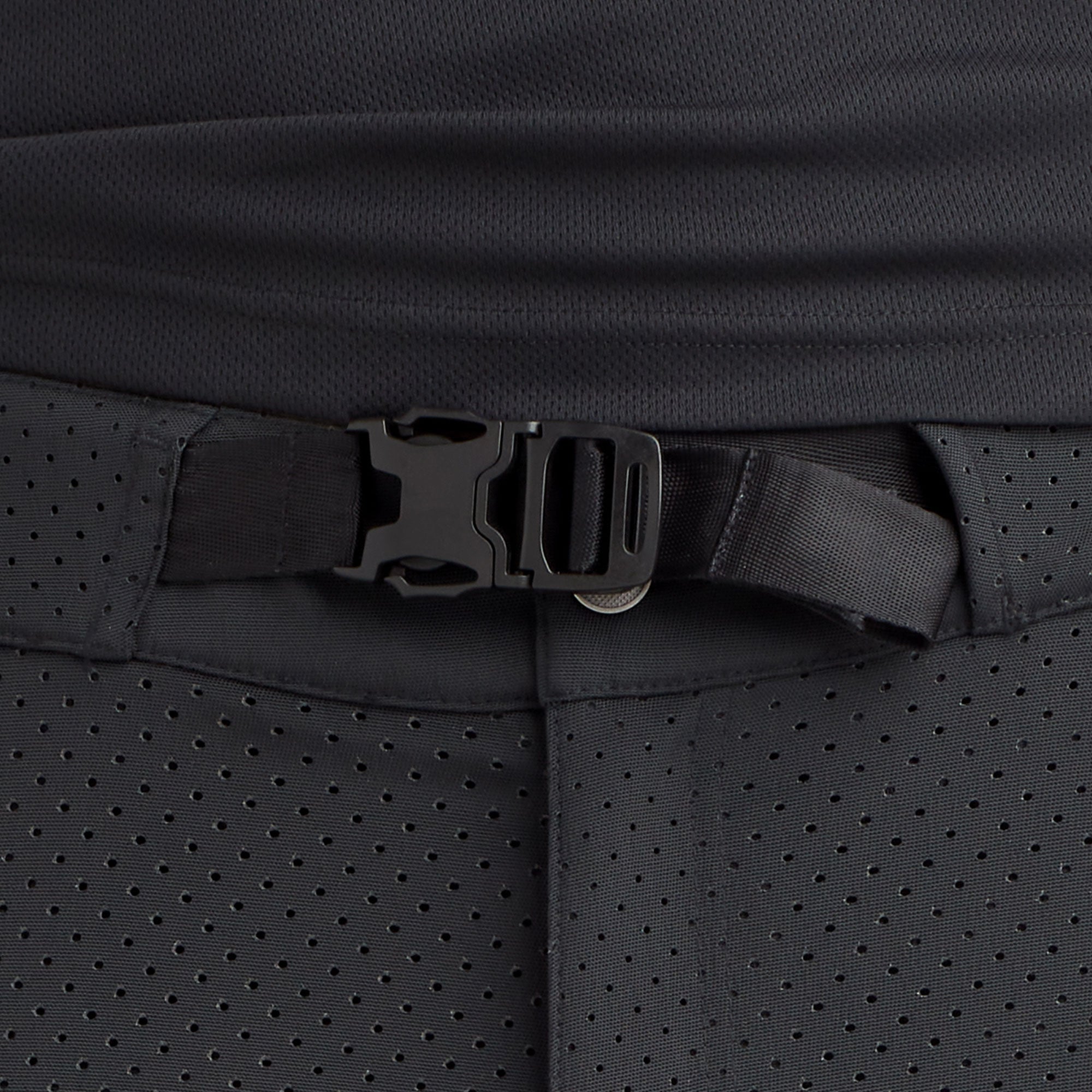
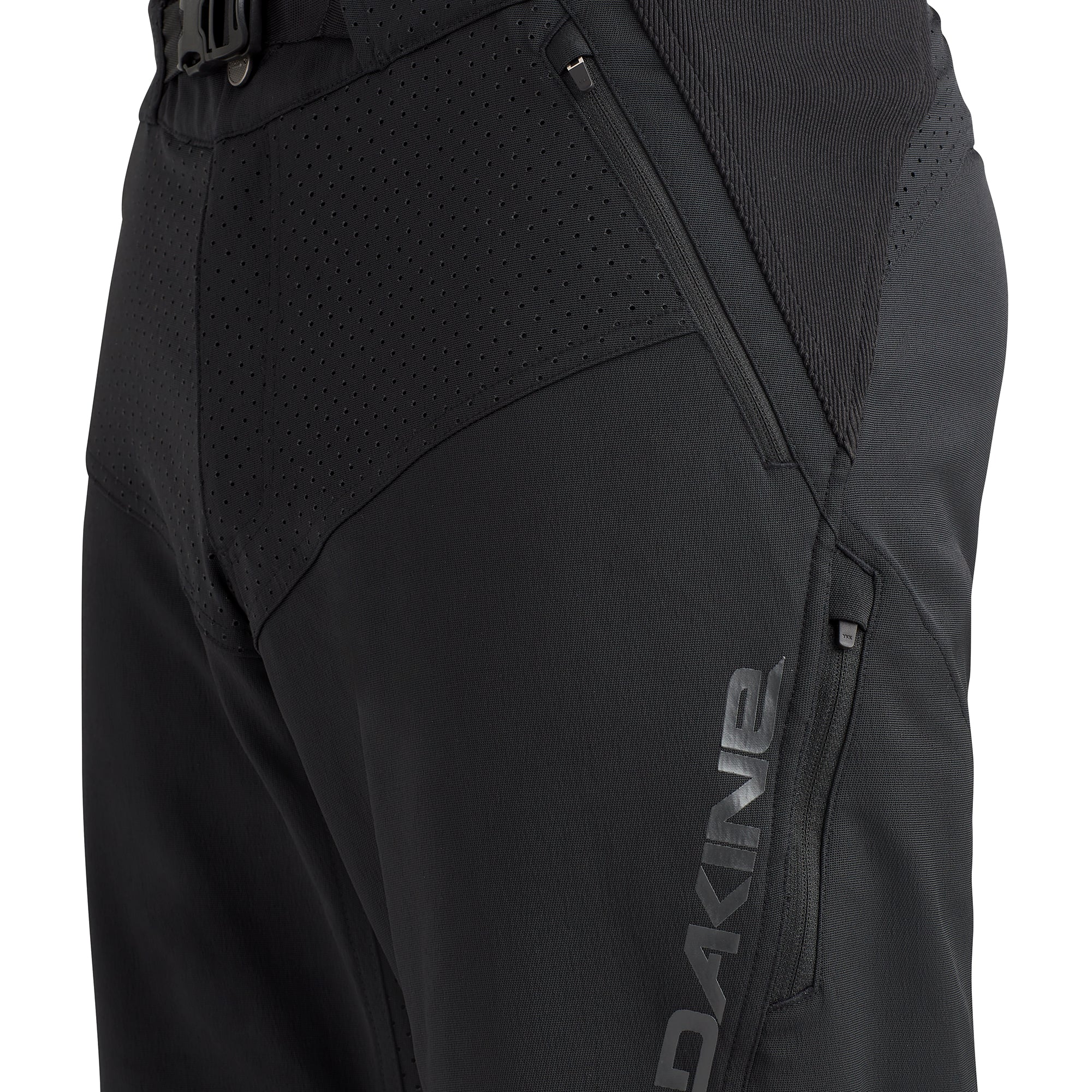
While I think the Thrillium is a great choice for those who ride chairlifts or shuttle rides often, I think some people would be okay occasionally pedaling in them, specifically Enduro riders or those who just want that extra protection on the way down and don’t mind something heavier and less breathable on the way up. Despite having perforated fabric in a few spots, I didn’t find the Thrillium to be a particularly breathable pant. During an hour long transfer of an Enduro race held in near-freezing temps, my lower body felt pretty hot after only about 20 minutes on the bike. I do think that this makes the Thrillium a solid choice for those who ride their bike in very cold temperatures, but for warm(ish) weather riding, expect to trade ventilation with durability from the Thrillium.
The Thrillium has two hand pockets and one small thigh pocket, all zippered. I found the hand pockets to be a perfect depth for something like a cell phone or a pair of gloves, and the zippered thigh pocket, although smaller, was great for Clif Bar wrappers and does have a sewn-in loop ideal for attaching keys to.
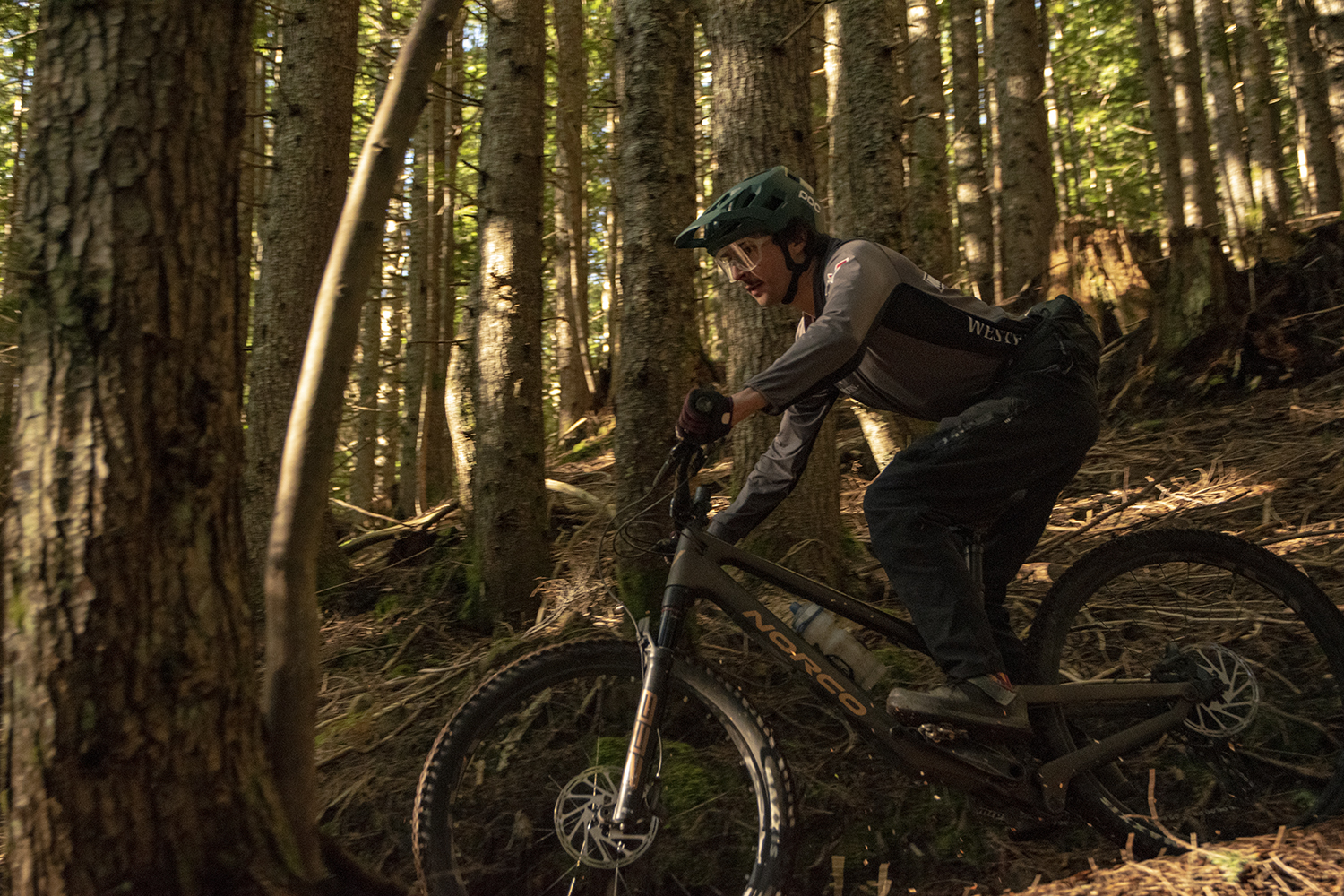
Luke Koppa: I’ve also spent a bit of time in the Thrillium and agree with everything Dylan said. They are a notably burly and roomy pair of pants. I really liked them for fall shuttle laps and I suspect I’ll enjoy them in the very beginning of the spring season here in Crested Butte, but I wouldn’t break them out often throughout the heat of the summer.
But the ruggedness of the Thrillium is pretty sweet, and if you ride at a bike park and/or shuttle where it’s not super hot, they make for a compelling pant — especially if you’re not a big fan of the increasingly common skinny fit of DH pants these days. Not only does the Thrillium leave plenty of room for my bulkiest knee pads, it also leaves lots of room around my (maybe a bit bigger than average) thighs, unlike many of the pants you now see on the DH circuit.
POC Men’s Ardour All-Weather Pants
Main fabric: 90% polyamide, 10% elastane. Reinforcement below the knee and in the seat: 100% polyamide Cordura. Front: 64% polyamide Cordura, 26% polyamide, 10% elastane.
Size Tested: Medium
Measured Weight: 304 grams
MSRP: $250
Reviewer: 5’10”, 155 lbs / 178 cm, 70 kg; 31 inch waist, 32 inch inseam
Dylan: Coming in at a similar weight and with a similar barely noticeable, comfortable feel as the Fox Flexair, the POC Ardour All-Weather pants are a solid option for riders looking for something comfortable and supple for wet-weather riding.
The Ardour Pants have a generally baggy fit yet also tapers off nicely at the ankles to keep the weather out. The taper also prevents the cuffs from getting snagged on any bike parts or trail side vegetation. They have plenty room to accommodate for knee pads and other layers without looking like clown pants. When pedaling and moving about the bike, these pants do not restrict movement whatsoever. The Velcro waist adjustment takes some more time to get right than two more easily adjusted options above, but once it is set, the waist band is very comfortable and does a great job of keeping the pant in place.
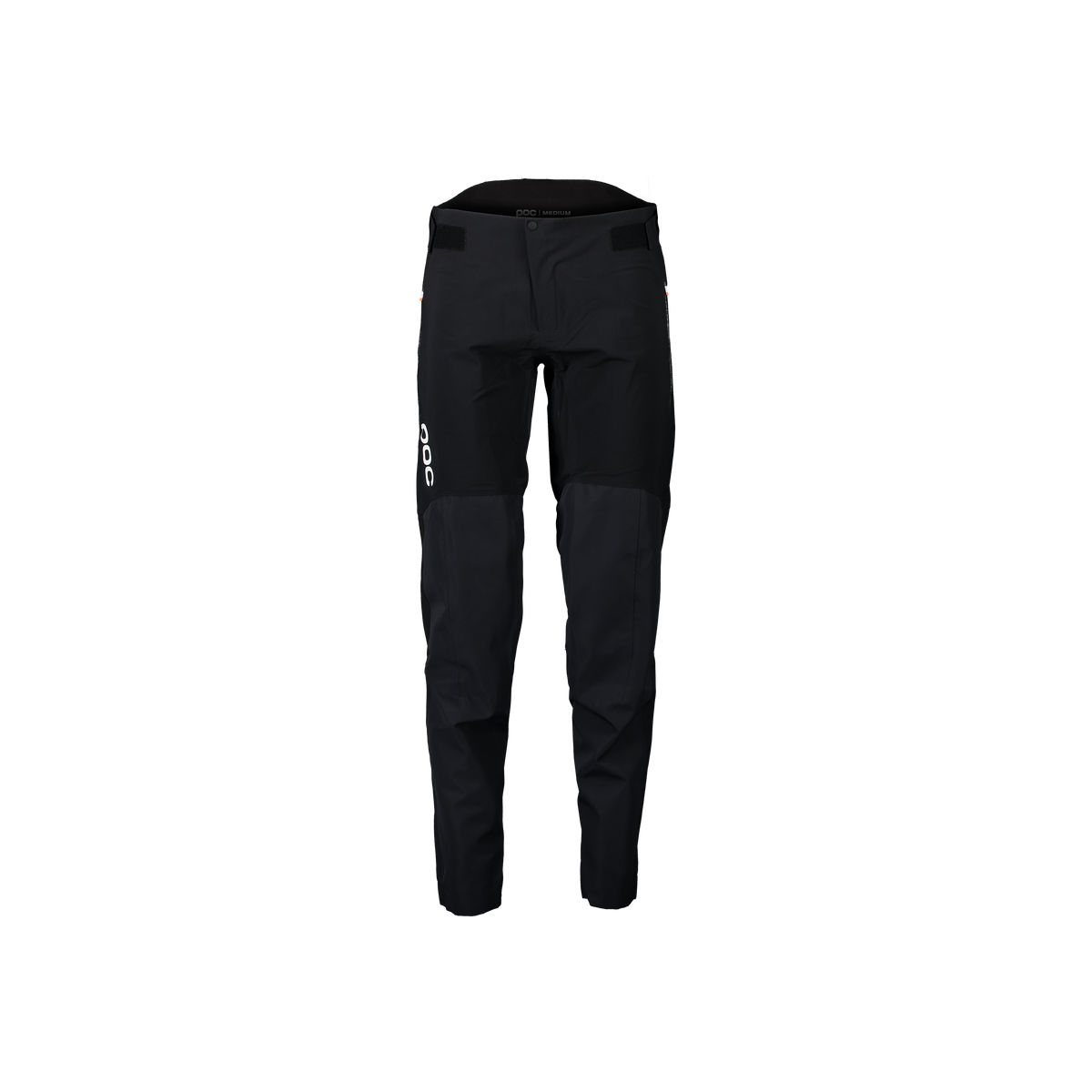
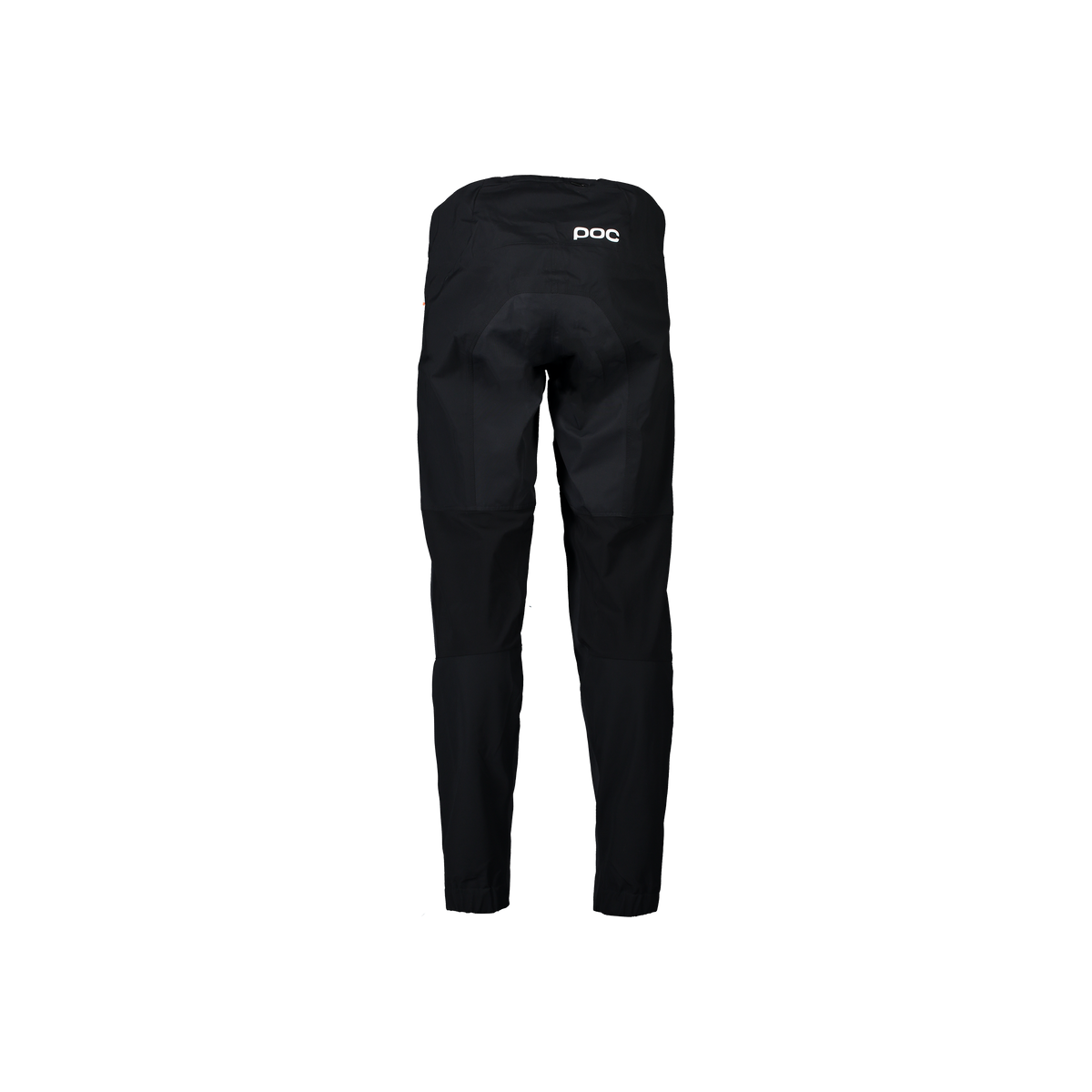
Due to the waterproof fabric, the Ardour pants aren’t quite as stretchy and supple as the Fox Flexair, but these are another pair of pants that I often forget to take off after rides due to how comfortable they are.
They have two zipped hand pockets which I also found to be great, and a smaller pocket onn the rear of the waistband (for a credit card or something of similar size) that I didn’t really have any use for.
Speaking of the waterproof fabric, these pants are truly impressive in terms of how well they keep water out. After riding in conditions ranging from moist trails with occasional puddles to straight-up rain, the Ardour pants kept my legs dry and warm. The typical places I’d get soaked on wet rides would be my butt (from spray coming from the rear wheel) and lower legs, and this is exactly where the Ardour pant is reinforced with waterproof fabric. The rest of the pant sheds water nicely as well, and I didn’t get wet at all when wearing them.
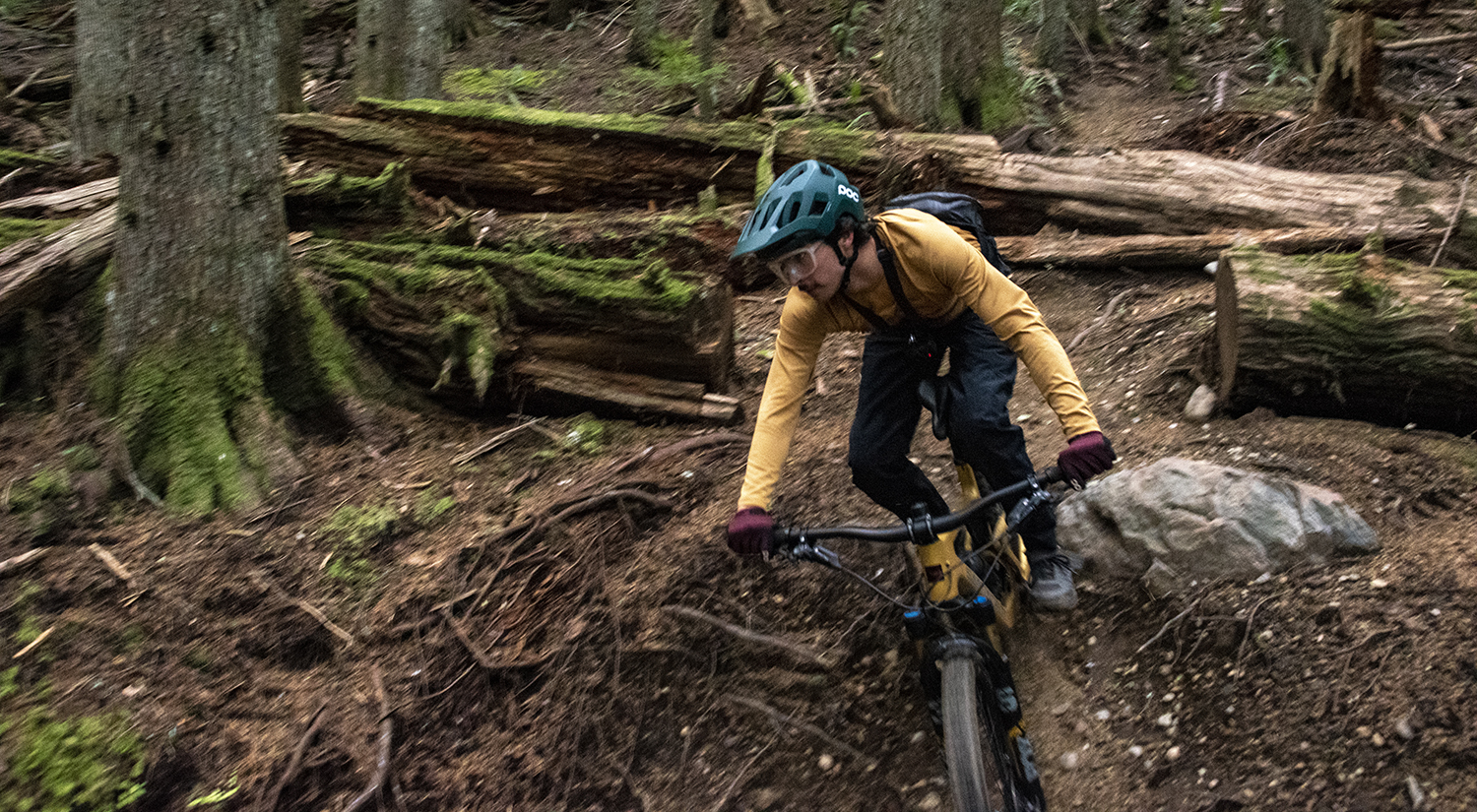
While impressive in terms of how waterproof they are, I found that they sacrifice some breathability to achieve this. In cool, rainy weather, I found them to be a great choice. However, in conditions in which the weather is dry but the trails are wet (think spring/fall riding or the day after a rainstorm), I found myself feeling a bit hot in them at around 50º F (10º C).
While there are more breathable options for everyday riding, the POC Ardour All-Weather Pants are a great option for those who reserve pants for riding in wet conditions or those who just live in a wet climate and end up with a soaked lower body after many rides.
NF DP3 Pant
Fabric: 90% Nylon 10% Spandex
Size Tested: Medium
Measured Weight: 410 g
MSRP: $218 CAD ($171.49 USD at the time of writing)
Reviewer: 6’, 170 lbs / 183 cm, 77.1 kg; 32 inch waist, 32 inch inseam
David: I’ve been using the NF DP3 pant for everything from bike park laps to trail bike rides on cooler days, and I’ve become a big fan. They’re extremely well patterned and comfortable, with just enough features to be super functional, without feeling like you’re carrying around the proverbial kitchen sink.
Probably the most standout feature of the DP3 is its integrated elastic belt. It’s sewn into the pants, and isn’t adjustable, but is remarkably comfortable, and still does its job of keeping the pants up admirably. There’s no fly or any other closure either — and the result is a super low-profile, comfortable waist system that’s especially nice to wear in conjunction with a hip pack. The DP3 also has two small zippered hand pockets, plus a third zippered phone pocket on the right thigh. I often don’t like carrying a phone in those sorts of pockets in looser fitting shorts or pants because it bounces around too much, but the DP3 are a slim enough fit to work well.
The material used in the DP3 is a touch on the warmer side of average, but does wick and breathe nicely. I’ve happily worn the DP3 for shuttle / lift access riding up to 85° F / 29.4° C or so (and could probably go warmer than that — I just haven’t had cause to) but if I’m planning to do a whole lot of pedalling, I’ll generally grab something else if it’s over 60° F (15.6° C) or so.
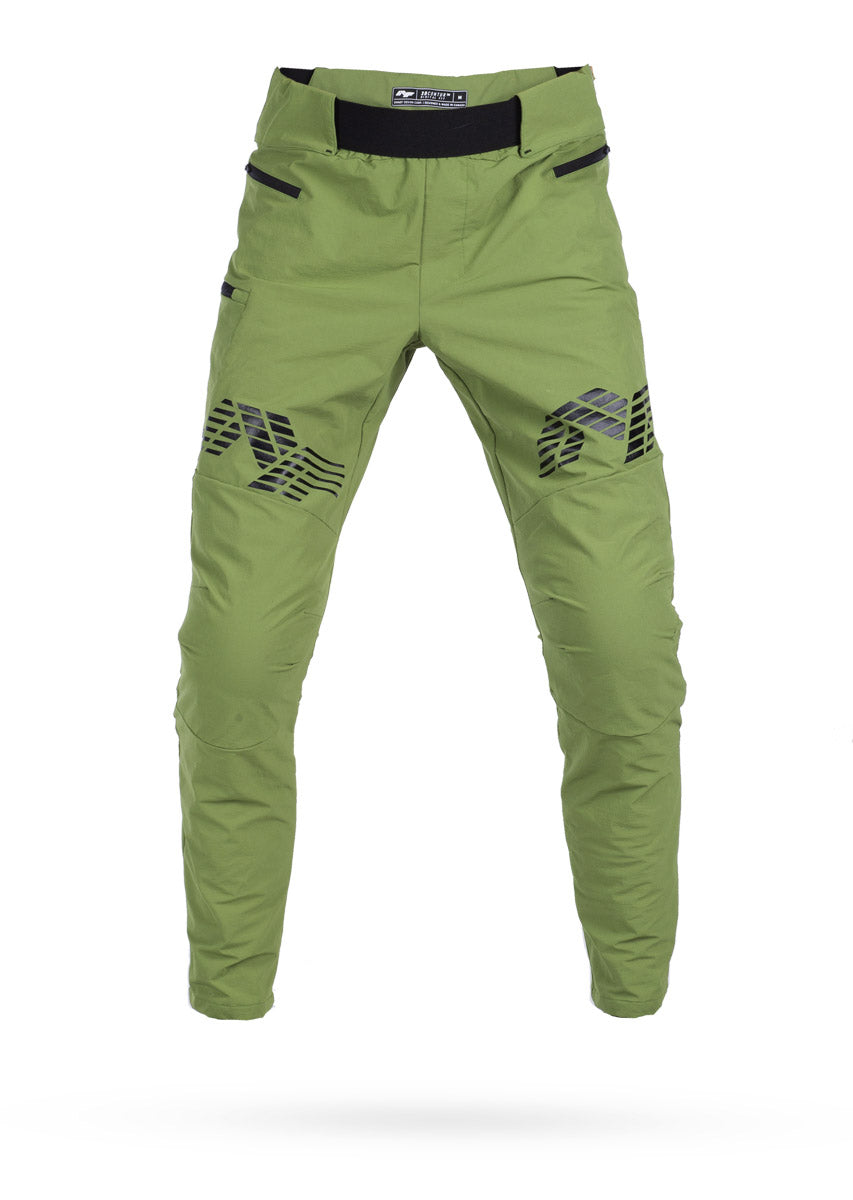
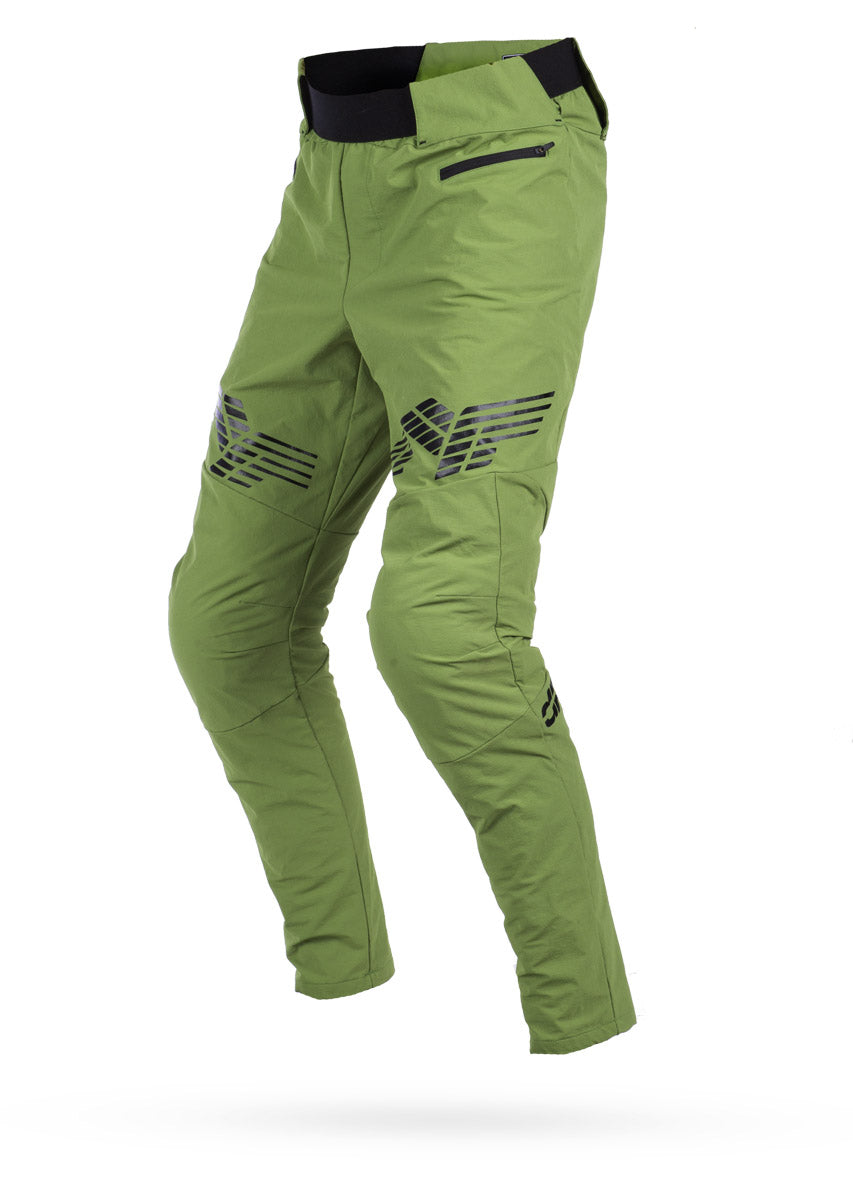
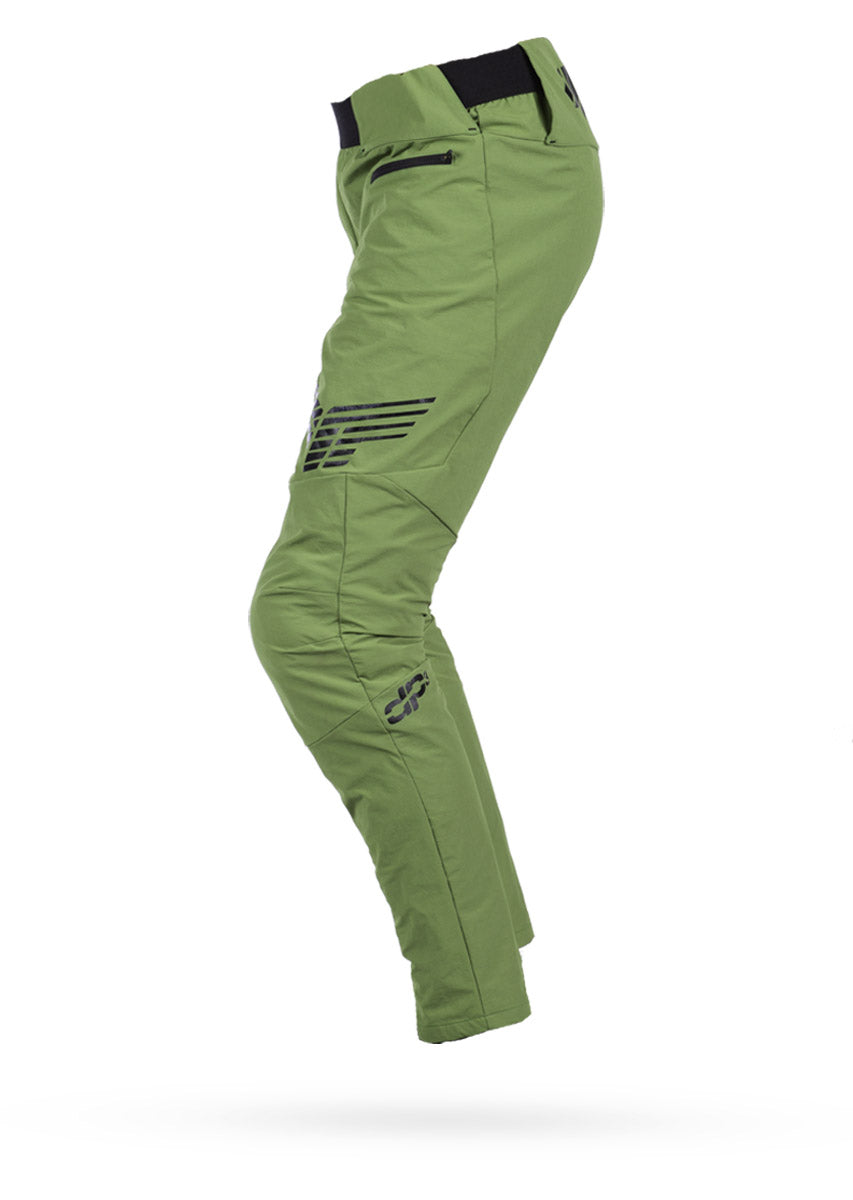
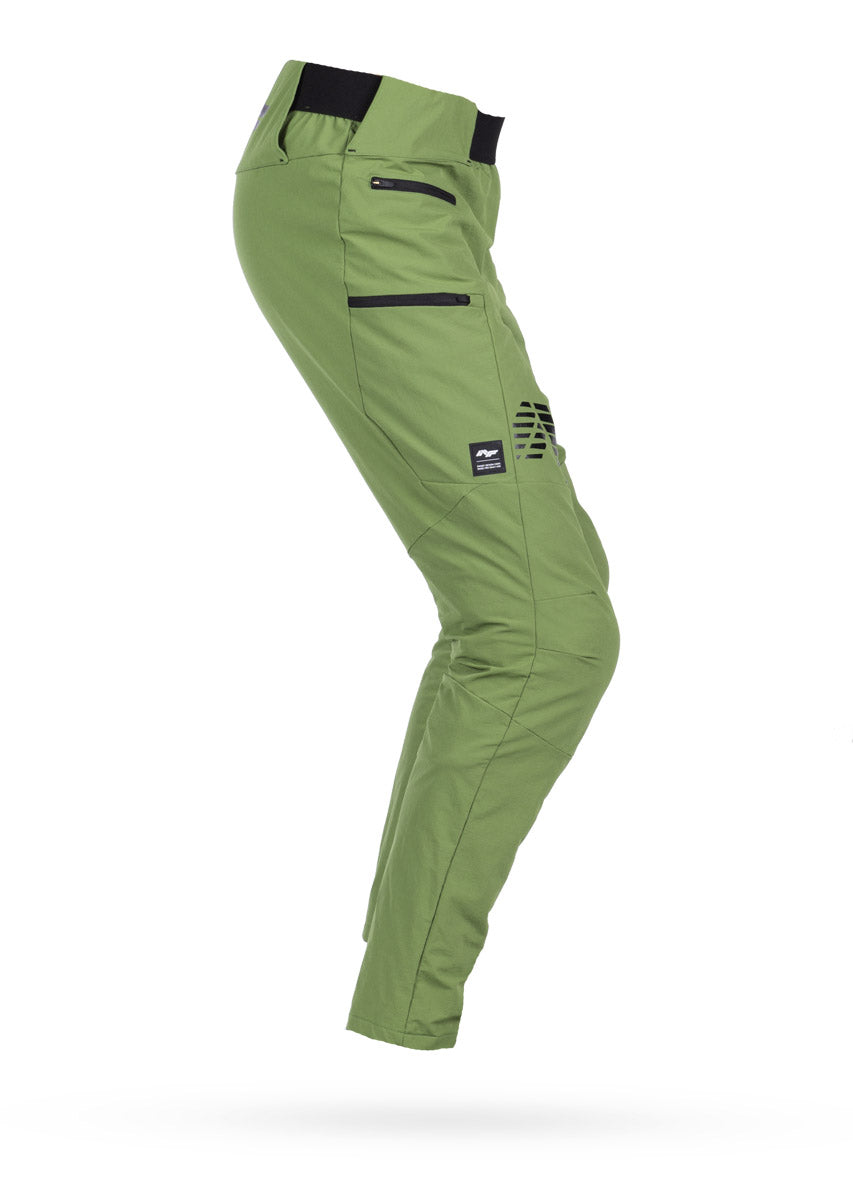
That’s not to say that the DP3 wouldn’t be fine in warmer weather, too, but I’ve got more ideal options in my (very full) closet.
For cooler fall and winter days, though, the DP3 has be come my go-to option, provided that it’s not so wet that I reach for a fully waterproof option. They’re warm enough to wear on pedally rides down to around freezing, ultra comfortable and well-patterned for on-bike use, and have held up great to a ton of days on the bike in the last 6+ months.
The fit of the DP3 is definitely quite slim, but they’re plenty stretchy to be comfortable and not feel restrictive. There’s room under them for fairly burly knee pads — I’ve used both the POC System VPD and VPD 2.0 very happily — but the combination of slim fit and quite articulated knee patterning means that they’re clearly a bike-specific pant. There are a bunch of better options here if you’re looking for something that’s as home being worn around town as it is on the bike.
For on-bike use, though, I’m a huge fan of the DP3. The fit is great (if you’re happy with a slim one), they’re super comfortable, and have held up well to a ton of miles and a few solid crashes. And as a bonus, they’re made in NF’s own factory in Vancouver, BC too.
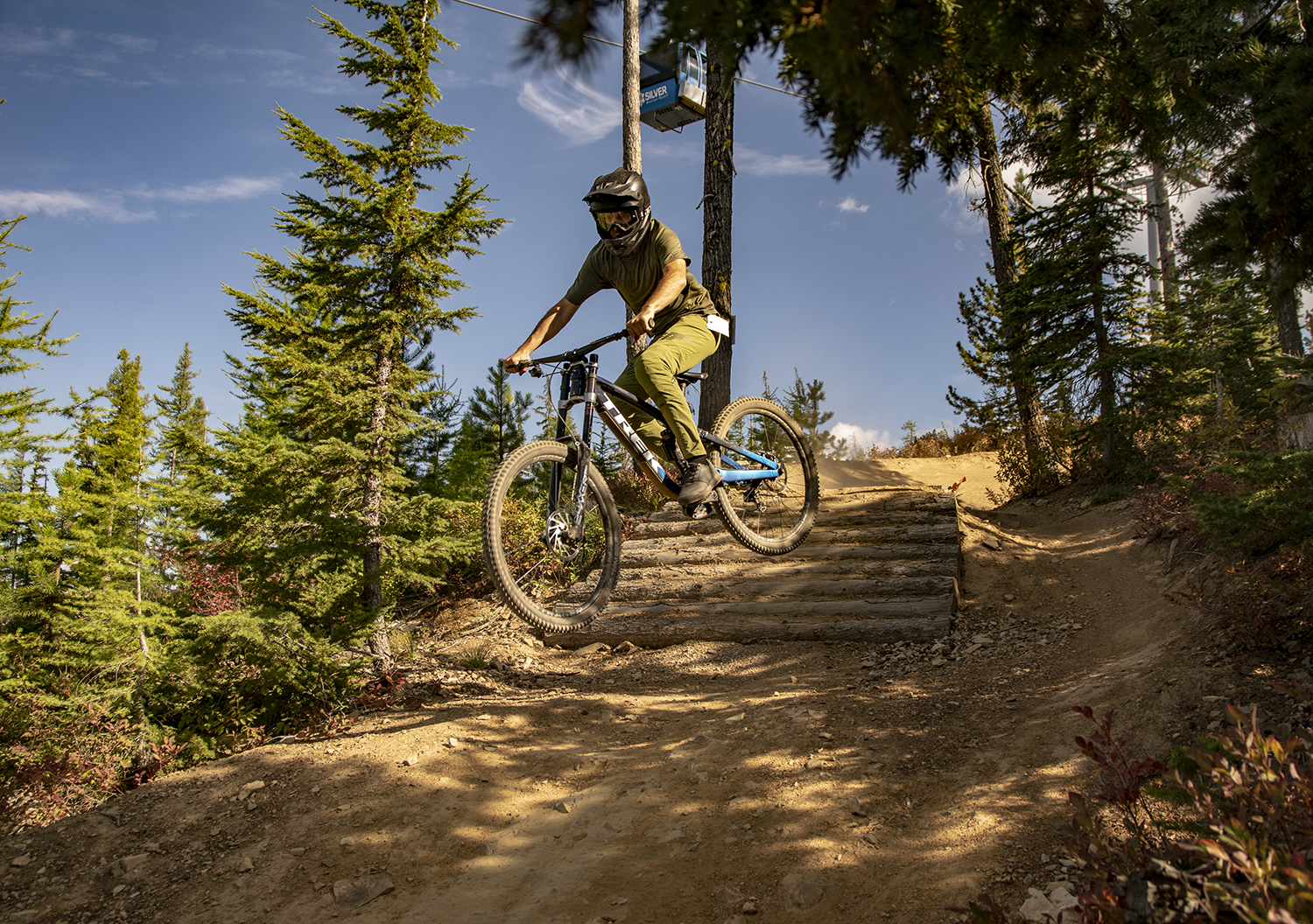
686 x Evil Everywhere Blackout Pant
Fabric: 92% Nylon / 8% Spandex
Size Tested: 43
Measured Weight: 380 g
MSRP: $120
Reviewer: 6’, 170 lbs / 183 cm, 77.1 kg; 32 inch waist, 32 inch inseam
David: On the opposite end of the spectrum, in terms of overall form factor, is the 686 x Evil Everywhere Blackout. It’s 686’s first foray into the bike world, in conjuction with Evil, and is essentially a casual pant that’s been tweaked to work a bit better on bike, and the result is pretty interesting.
These aren’t the first pants I’d grab for an all-day ride, but they’re plenty serviceable for shorter pedals, and — very much unlike the NF DP3 — also look totally at home being worn around town. They’re also quite fully-featured, in terms of pockets and the like. The Everywhere Blackout has two standard open hand pockets, with sewn-in loops to clip a key ring to in both. The right one also includes a small zippered key pocket. A pair of zippered thigh pockets sit below the hand pockets, and another pair of open pockets are also included on the seat. And finally, those included internal sleeves to keep things organized, the left one of which is labeled as being RFID blocking.
The material used for the Everywhere Blackout is mid-weight and quite supple, but its relatively tight weave does mean that it’s a bit less breathable than some of the more technical options here. And so I’ve worn the Everywhere Blackout for all-around casual use a lot more than I have on the bike, but for that use I’m a big fan. They’re comfortable, look good, and work great for running errands by bike or shorter, more casual rides.
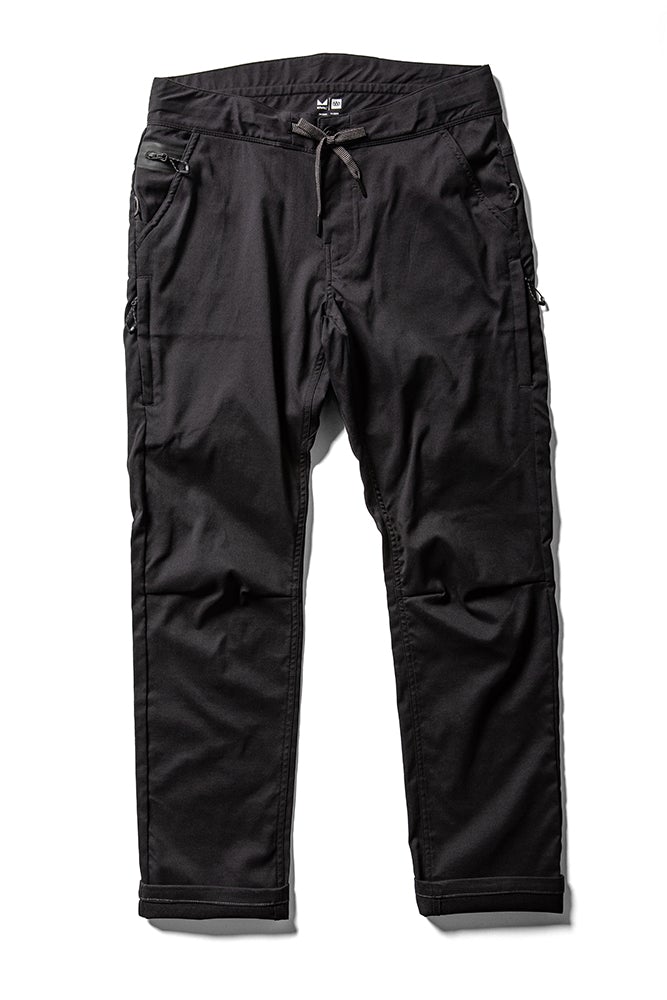
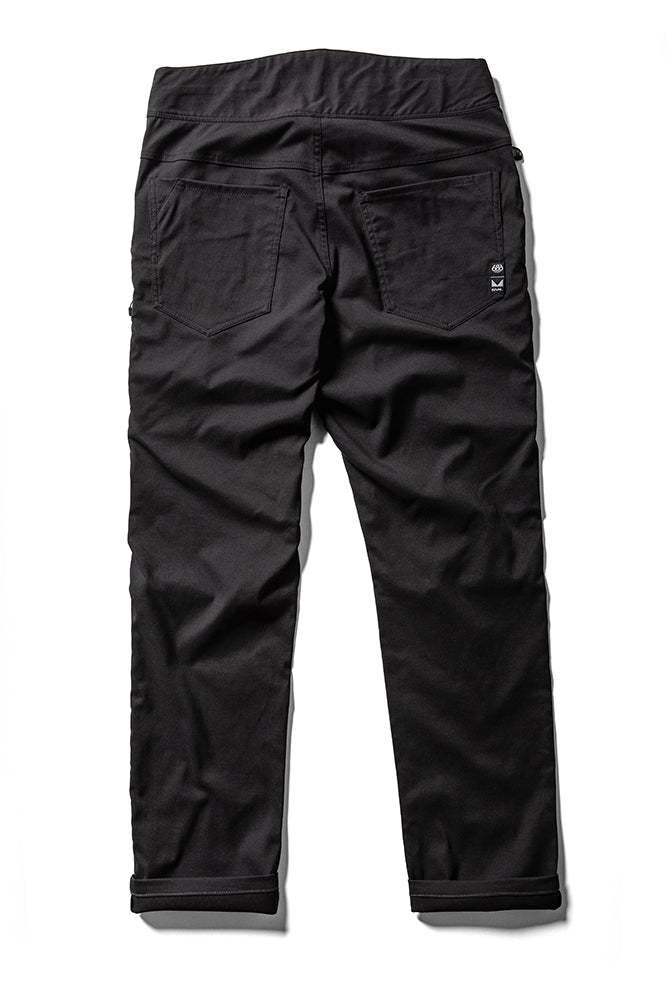
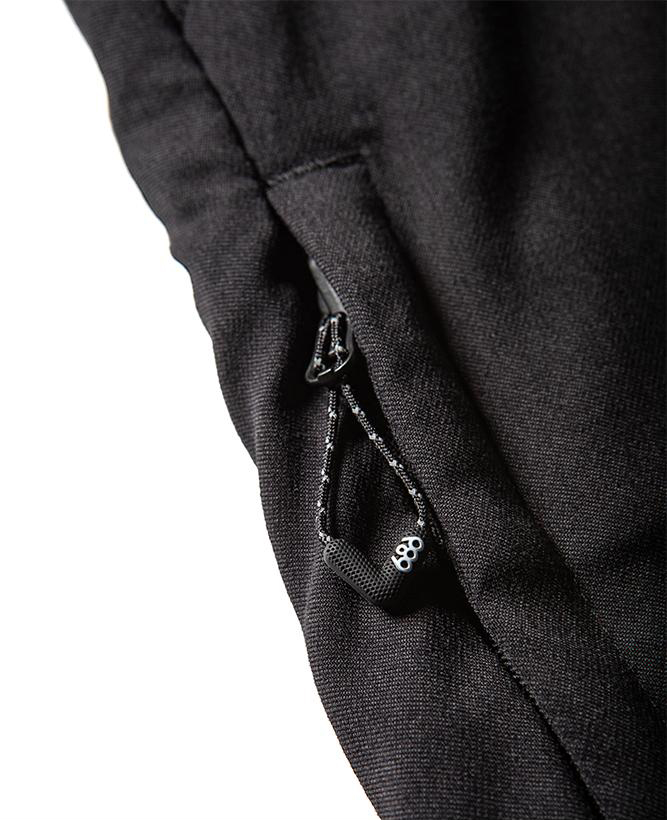
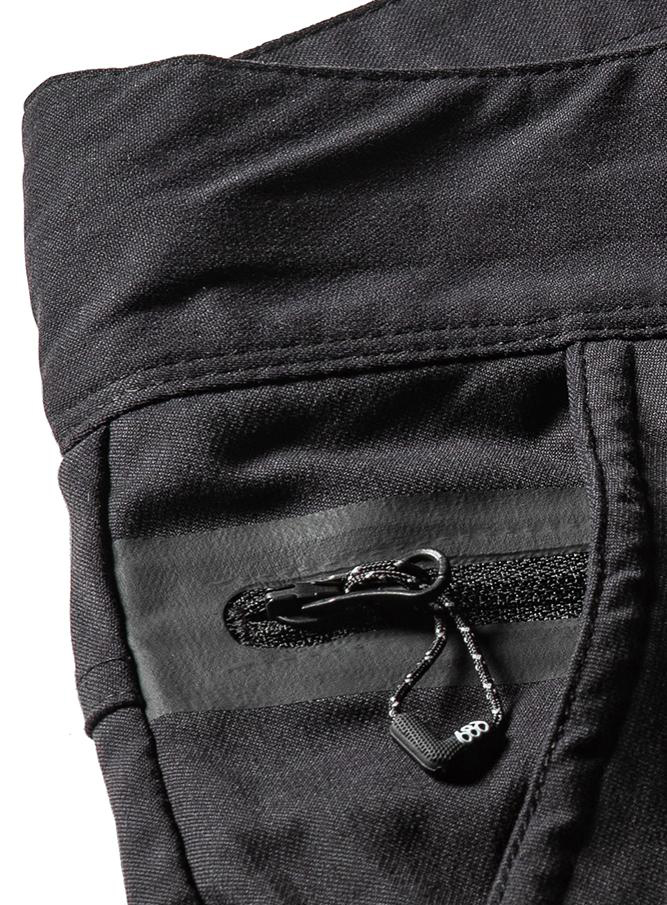
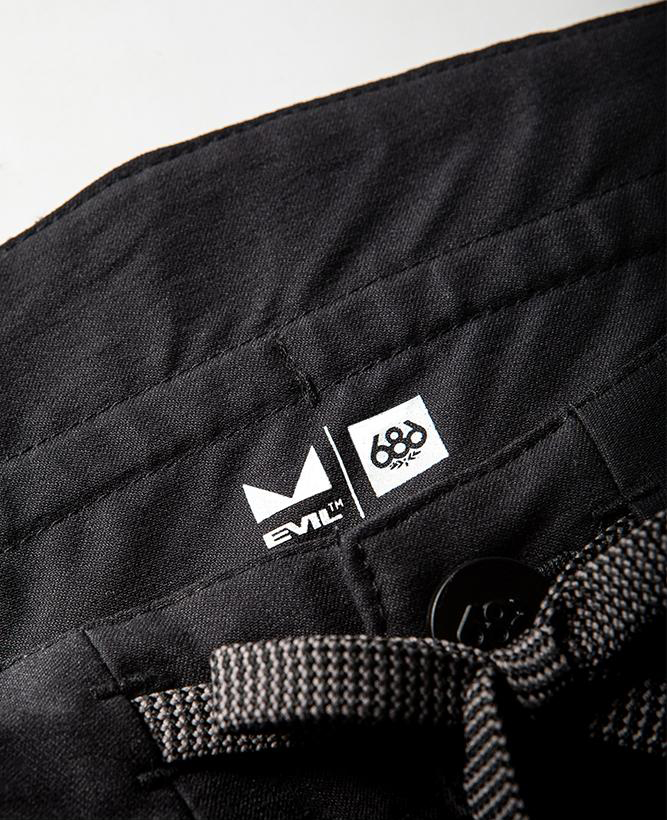
As 686 notes, the Everywhere Blackout Pants run really small. I’m squarely a 32 waist normally, but they sent over a 34 to test, and that was absolutely the right call. Size up on these — and not just if you’re on the brink between sizes. Having sized up, I’d call them a pretty average fit. Particularly compared to more bike-specific options, the lower leg is a bit less tapered than average. The waist closure uses a normal zippered fly with a top button, and adds an option drawstring to help cinch things down.
Leatt All Mountain 5.0 Pant
Fabric: HydraDri 3L, 98% polyester, 2% elastane
Size Tested: Medium / US 32
Measured Weight: 380 g
MSRP: $200
Reviewer: 6’, 170 lbs / 183 cm, 77.1 kg; 32 inch waist, 32 inch inseam
David: The All Mountain 5.0 is Leatt’s 3-layer waterproof pant designed for wet weather use, and they’ve been in heavy rotation for me in what was a very, very wet start to winter in the PNW. The HydraDri material is stated to 30k waterproof / 23k breathability ratings, and is medium-supple while proving to be quite tough so far.
I’ve been wearing the All Mountain 5.0 in a size Medium / US 32 — my typical pants size — and I’d say they run a touch on the small side. The waist seems true to size and fits me well, but they’re notably snug across the seat, in particular. The fit is generally slim elsewhere, too, though I’ve been able to run medium sized kee pads (POC System VPD, mostly) underneath the All Mountain 5.0 happily. It’s also worth noting that the ankle openings are fairly small — they do feature a velcro adjuster, but even with that fully undone, the opening is snug when trying to take the pants on or off. With my size US 10 feet, I’d call it quite noticeable but not really a problem; folks with significantly larger feet might struggle, though.
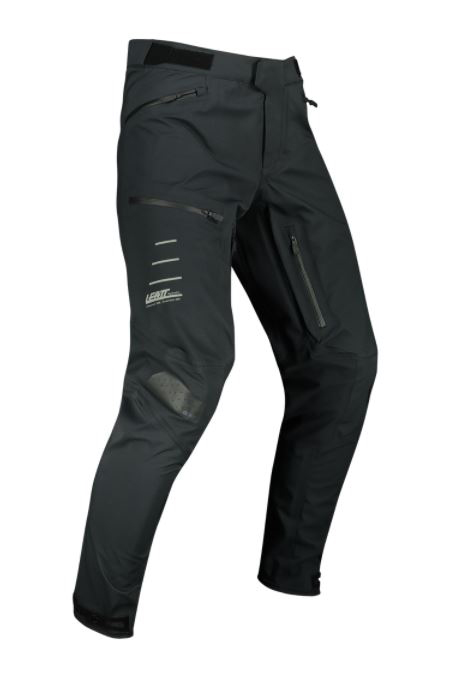

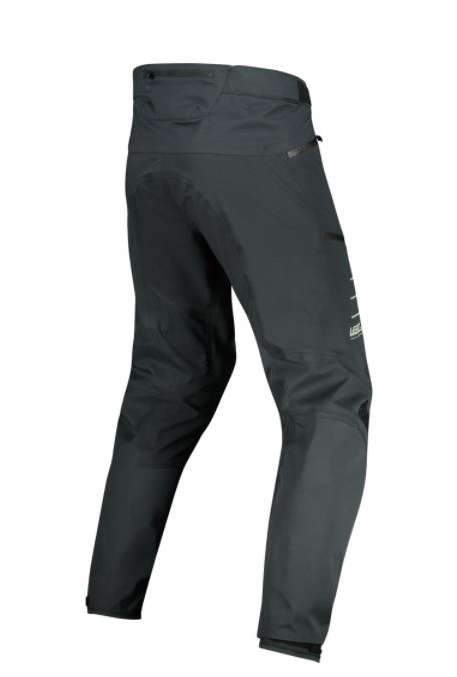
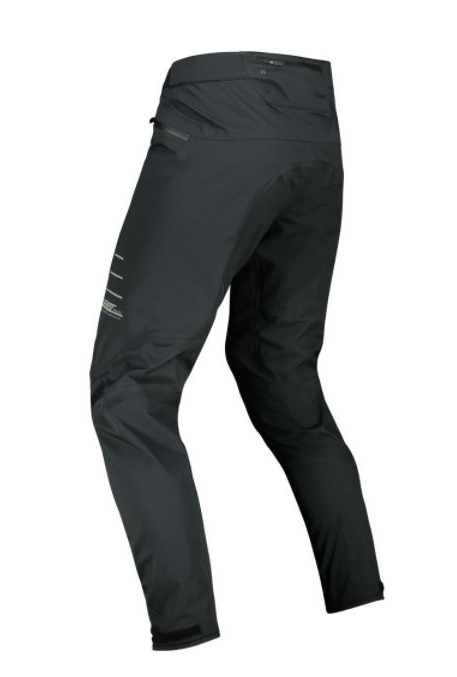
The All Mountain 5.0 pants are nicely featured. The waist closure is a standard zippered fly with a pair of snaps at the top, and velcro adjusters on the hips are used to tension an elastic integrated belt. I wouldn’t mind a slightly higher cut across the back of the waist to keep spray out, but the back of the waist features an effective silicone gripper. And there’s a zippered pocket across the back of the waist that’s meant to hold a phone which works great for my medium-sized phone (Google Pixel 4) with a case on it, but very large phones will likely not fit. Elsewhere, the All Mountain 5.0 has a pair of zippered hand pockets with a key clip in the left one, plus an extra zippered cargo pocket on the right thigh.
Breathability on the All Mountain 5.0 feels about middle-of-the road for a 3-layer waterproof hardhsell material, but a pair of zippered, mesh-backed vents on the inside of each thigh are extremely effective in venting warm air out. The DWR on the All Mountain 5.0 has done a good job of stopping the face fabric from wetting out, and I’ve yet to notice any water coming through the fabric, seams, or zippers.
Overall, the All Mountain 5.0 is a really solid option for a wet-weather bike pant, particularly if a notably slim fit works for you. And if you’re on the borderline size-wise, we’d recommend sizing up.
Fox Ranger Pant
Fabric: 85% polyamide nylon, 9% polyester, 6% elastane
Size Tested: 32
Measured Weight: 308 g
MSRP: $99.95
Reviewer: 5’8”, 155 lbs / 173 cm, 70 kg
Luke Koppa: I typically run hot and consequently opt for shorts while biking through most of the summer (and really, most of the bike season). That said, in the Gunnison Valley we get a bit of everything in terms of weather when you’re biking from spring through fall, and I’m continually amazed by how poorly every weather app is able to accurately predict what the sky is going to actually look like on a given day.
So a lot of my rides this past spring and fall involved a mix of warm sun, gusty winds, pea-sized hail, full-on snow, and brief rain showers. There were several where I got all of that within a 30-minute period. And for those days, I really like Fox’s Ranger Pants.
The Ranger collection is Fox’s sort of “crossover” line, designed to perform on a bike but without the “let’s see how many logos and neon colors we can put on this piece” look.
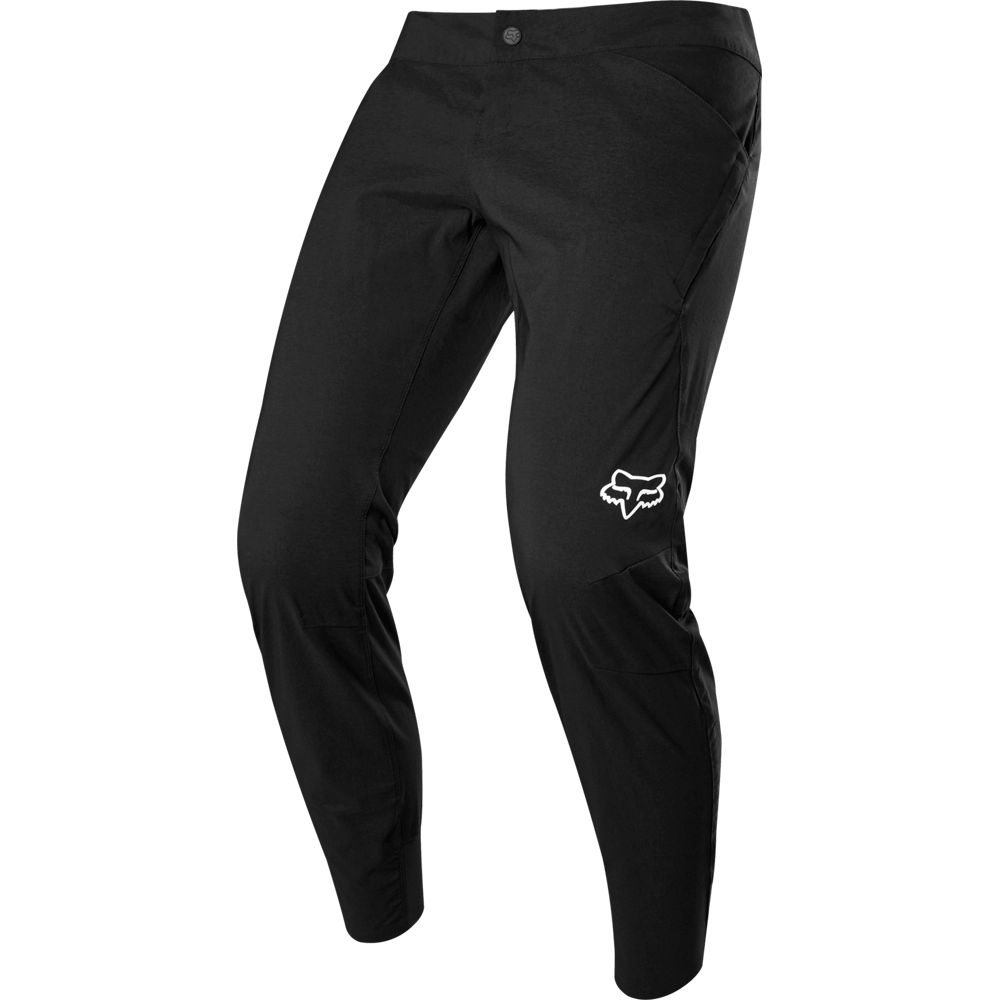
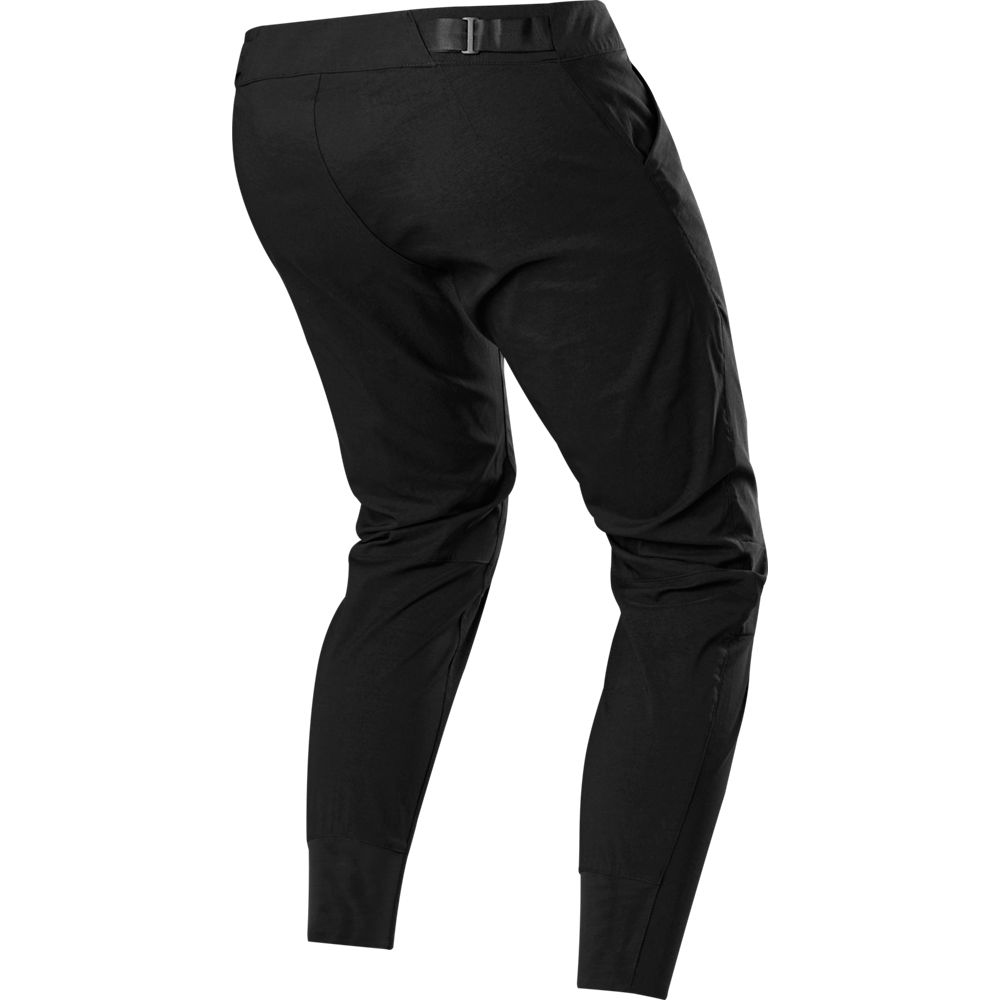
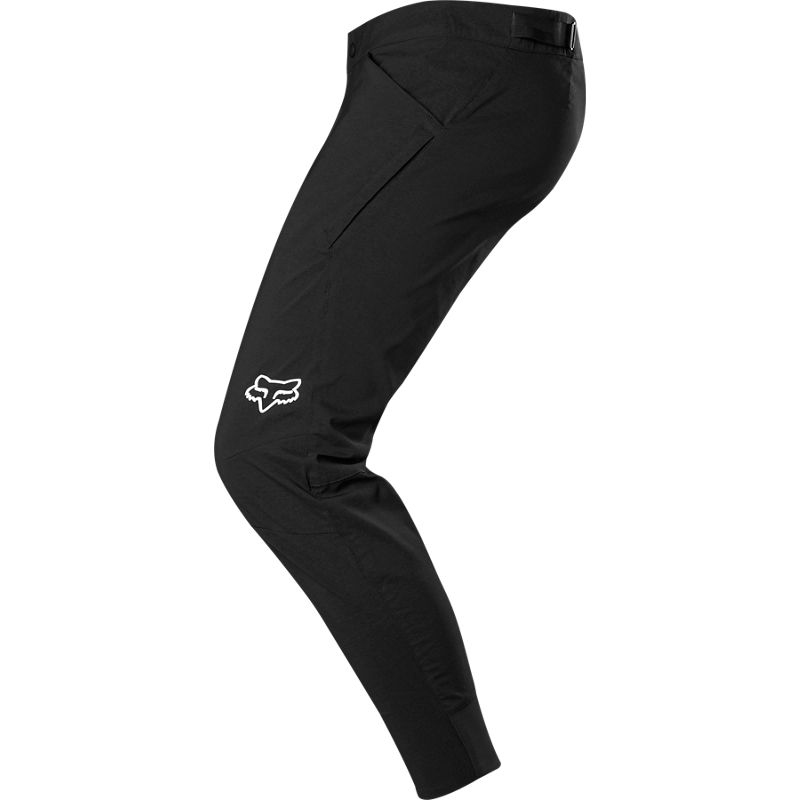
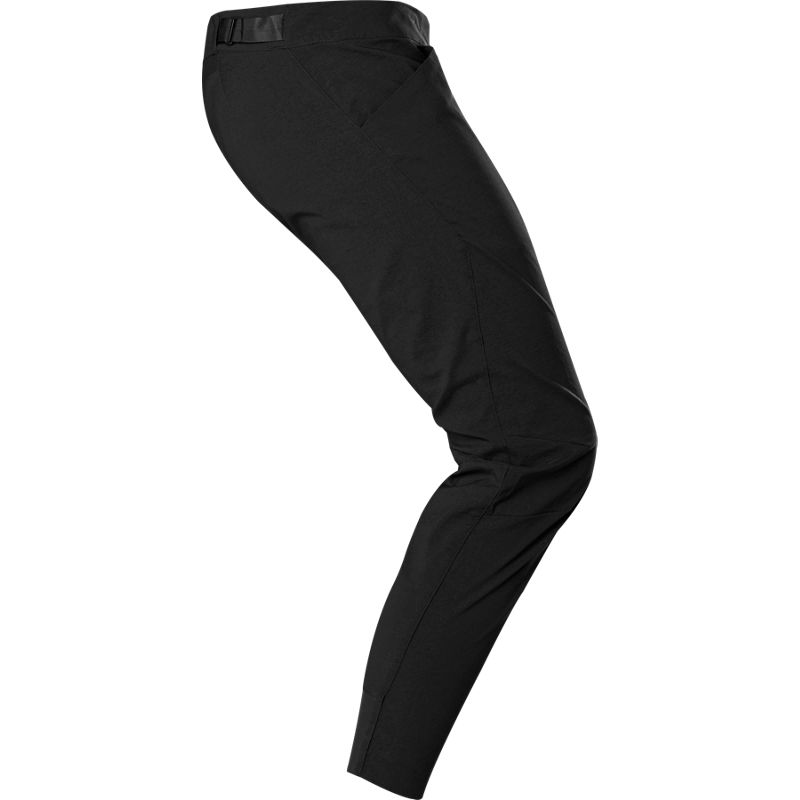
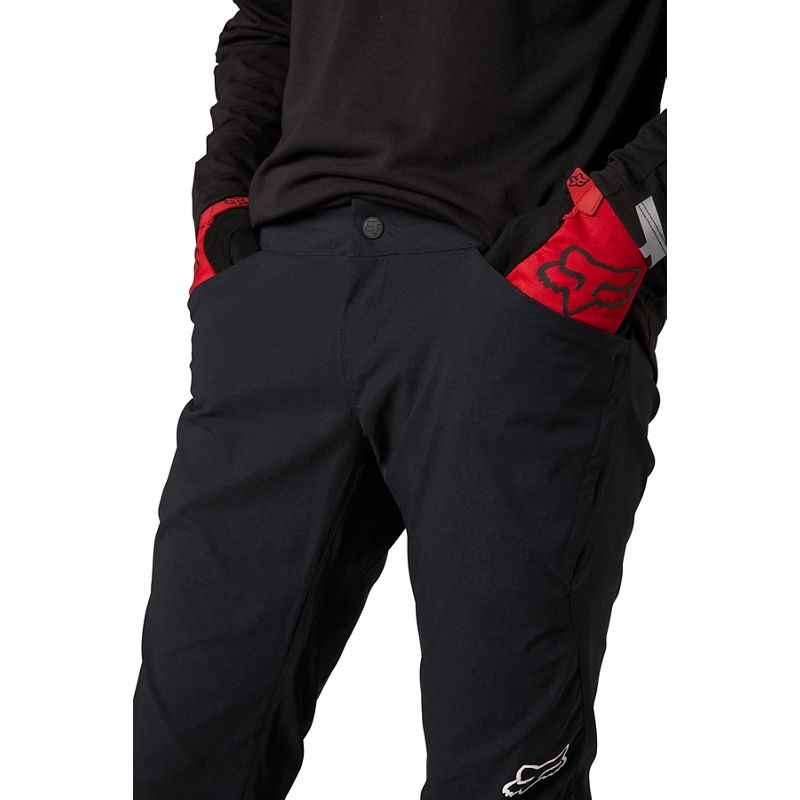
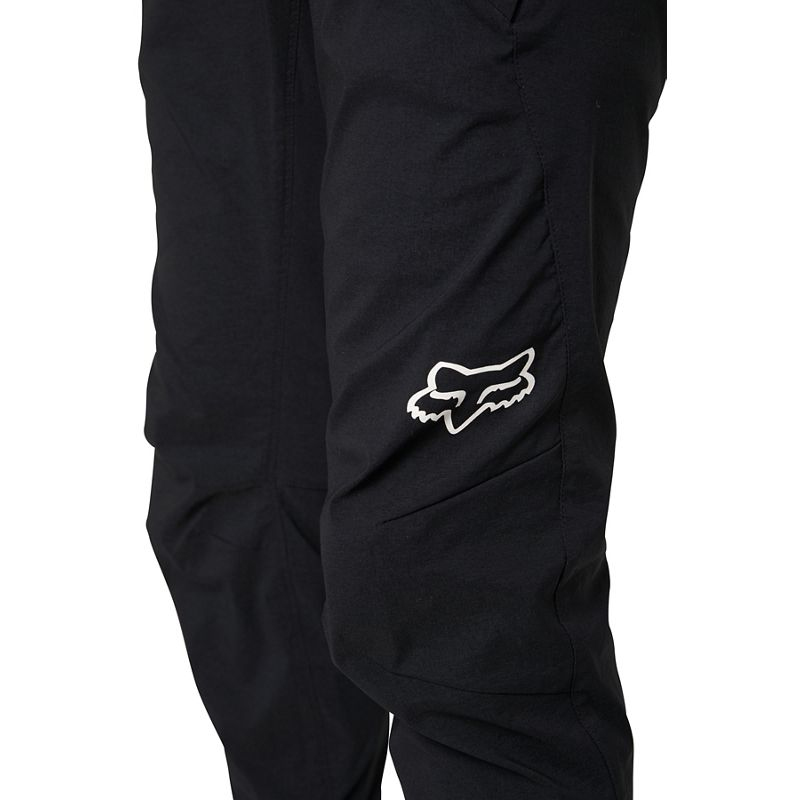
The Ranger Pant uses a pretty typical softshell-like stretch-woven fabric that’s on the lighter side, and the fabric breathes about as well as any of my MTB shorts. That makes me more and more inclined to bring out the Ranger Pant, even when it’s around 50°F / 10°C and sunny. However, it’s also what makes the Ranger less ideal as a cold or wet-weather pant, relative to many of the other options here. The Ranger cuts a bit of wind and sheds some water, but it’s not the best choice when the weather is really nasty.
The fabric is also quite stretchy, but I think what’s really made this pant my go-to is its fit. The patterning is really well done, with no noticeable restriction while pedalling, yet it doesn’t look or feel overtly bike-oriented when walking / standing. The fit is roomy through the thighs and knees and then significantly tapers to the ankle to avoid getting sucked into your chain. Personally, I’m a big fan of this style, though the off-the-bike look may not be for everyone if you prefer roomier-fitting casual clothes.
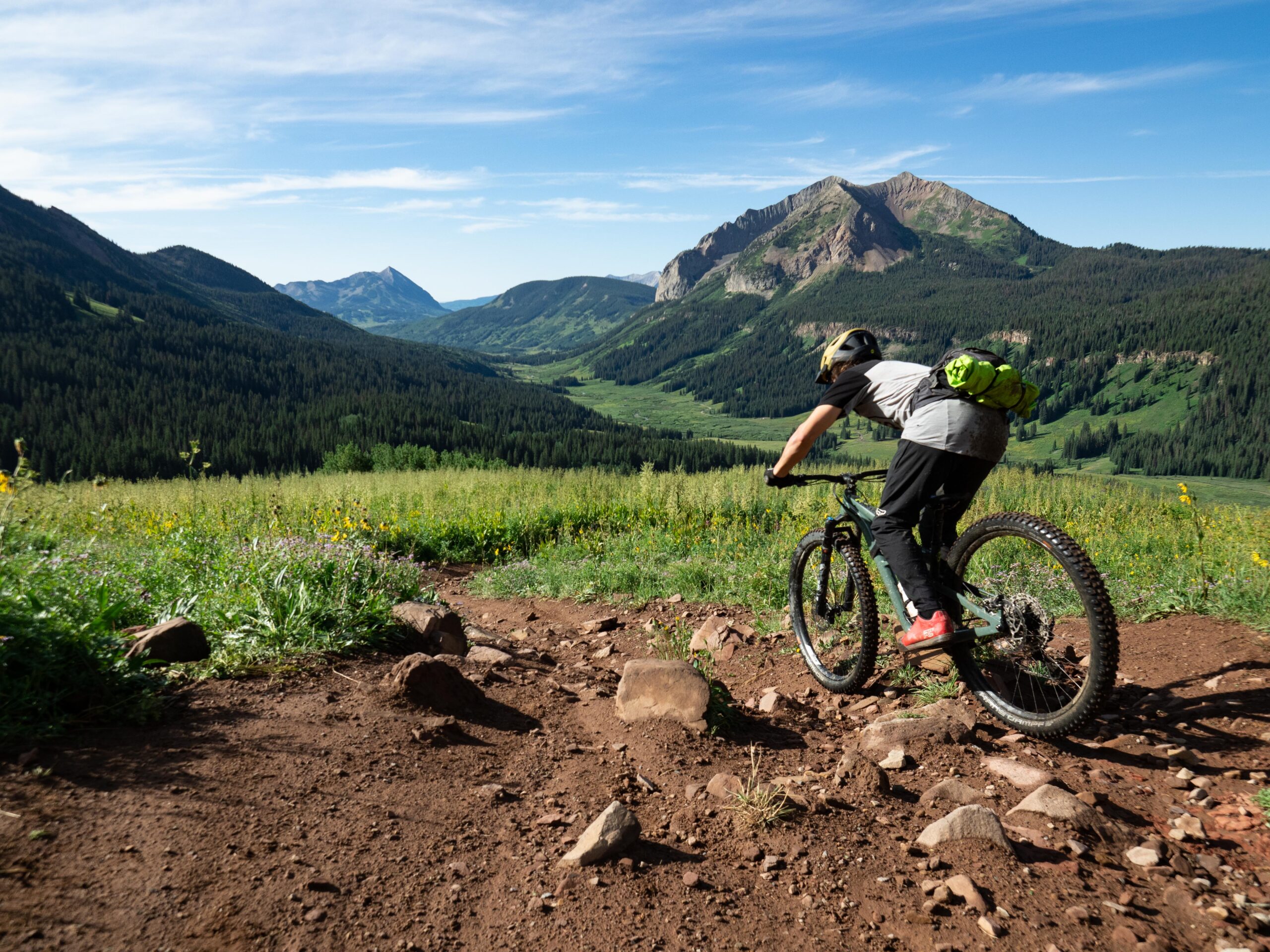
I figured I’d like riding in the Ranger Pant, but its subtle aesthetics, versatile fit, and three pockets have all meant that I’ve been wearing it a whole lot just around my house and when running errands. My friends have far more flexible schedules than I do during the bike season here and rides are consequently often arranged at the last minute, so it was nice to have the Ranger for when I thought there was any chance of needing to sneak out for a quick lap at some point in the day.

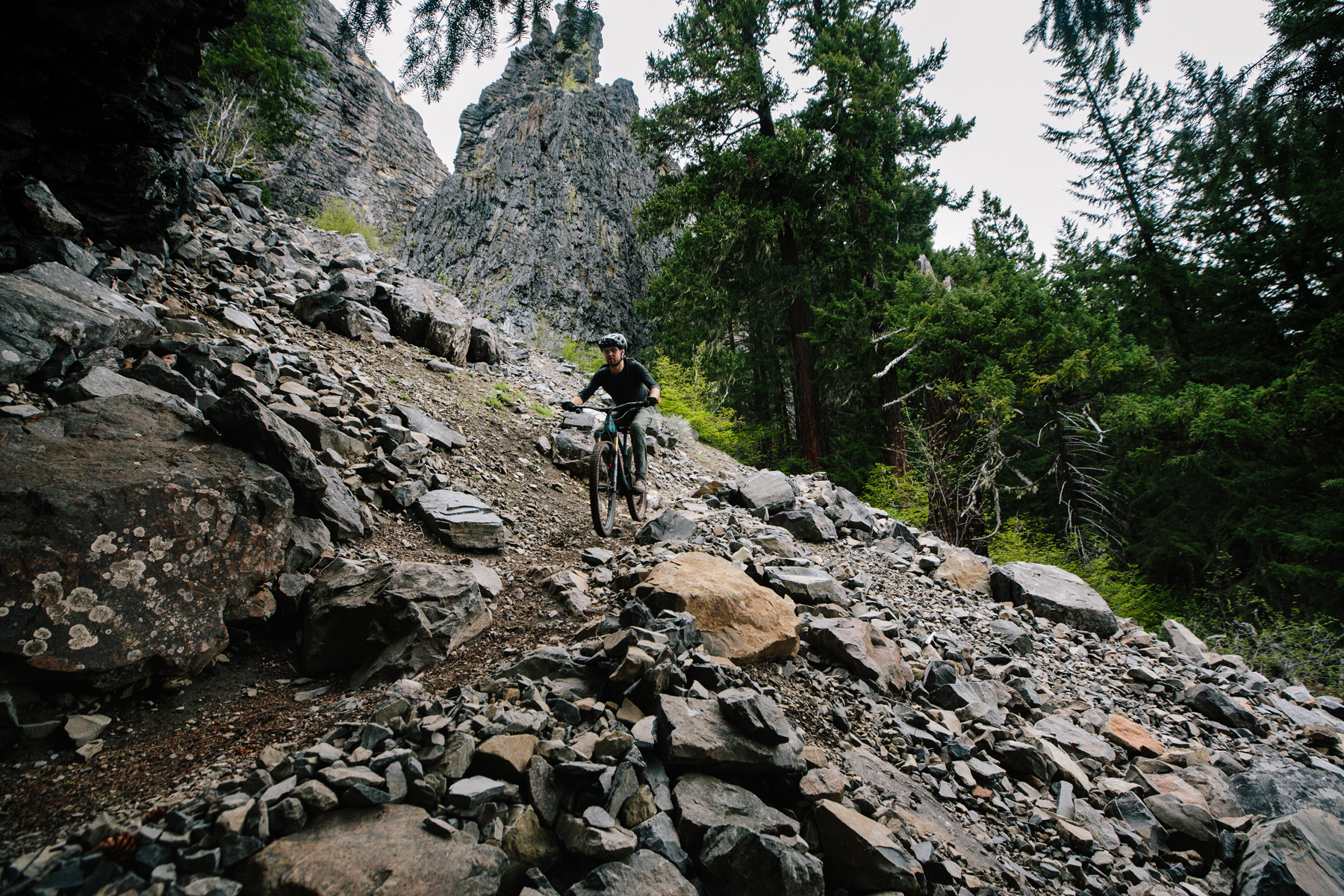
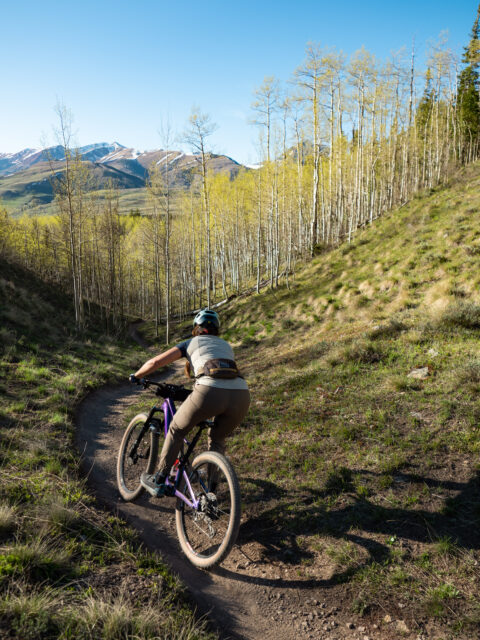
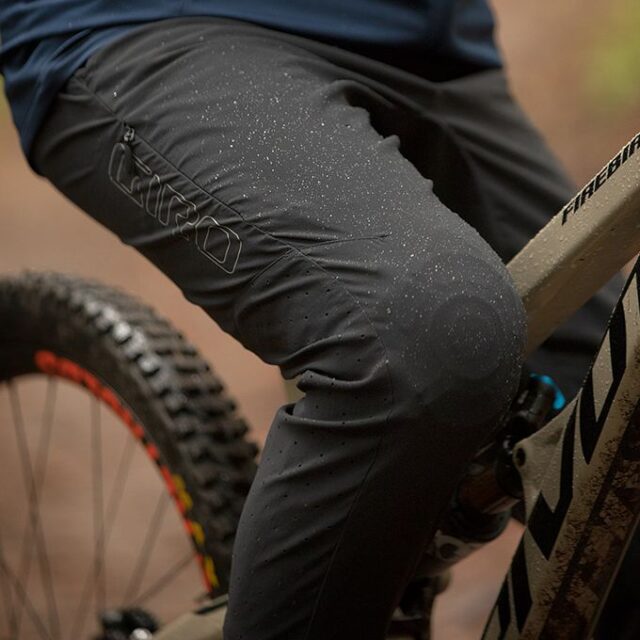
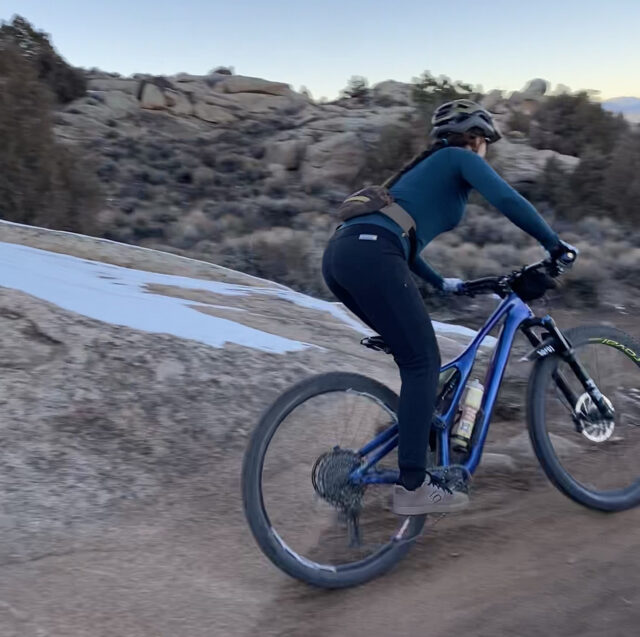
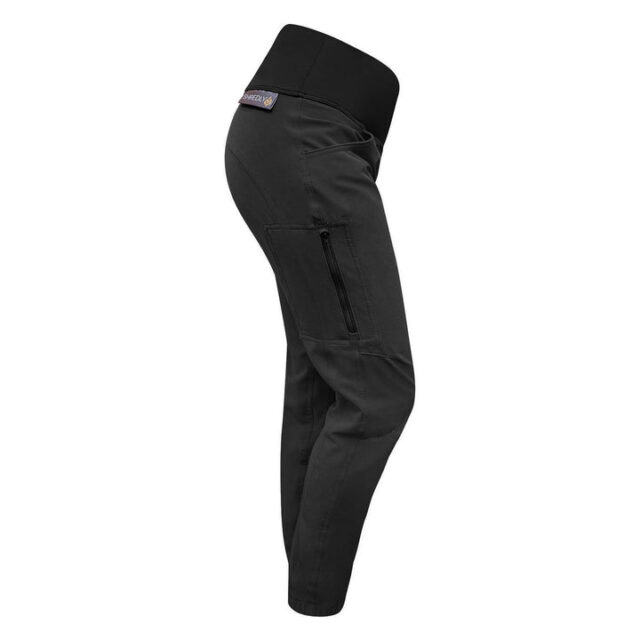
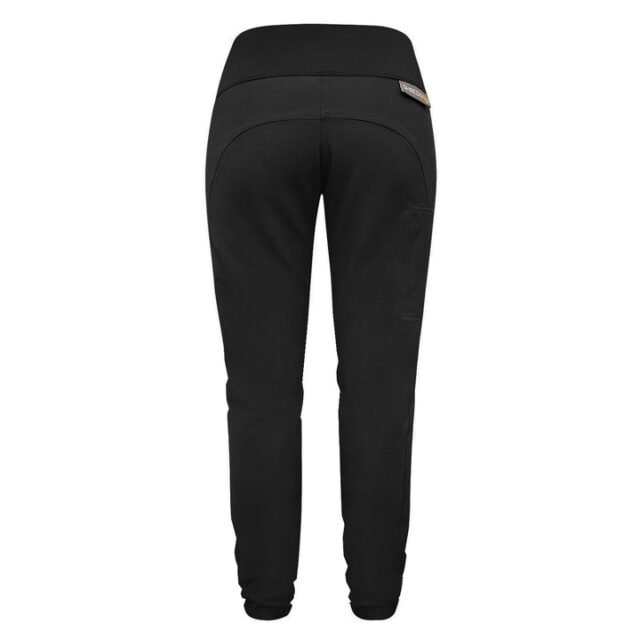
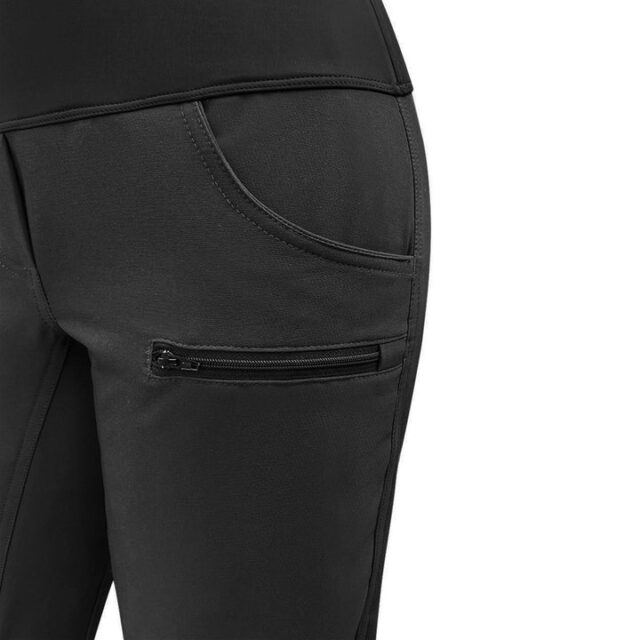
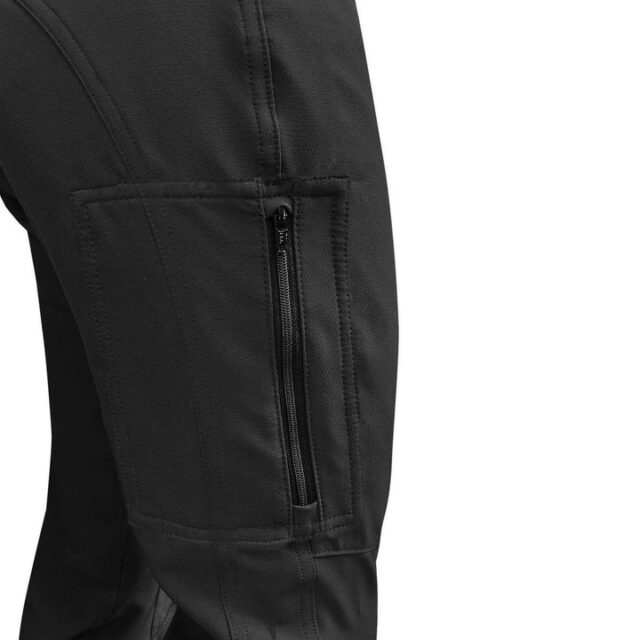
If you’re skinny with bigger feet (30 waist size 10 feet) the specialized trail pants aren’t great. I have busted the seams just getting them around my instep. They fit great once they’re on though!
Yep, I noted the same in the roundup. It’s too bad because they’re genuinely excellent otherwise, but that part is pretty annoying.
NF DP3 for the win!
Came for the Pit Viper DH pant.